Try the new IKO website at https://beta.ikointl.com/
Help< > For Instructors
Author: Marica Moda
How IKO Instructors Can Convert Their Certification with OPES (Organization for Sports Education) Recognized by CONI (Italian National Olympic Committee).

Guide to Converting IKO Kitesurf Instructor Certification to OPES/CONI Certification - Sailing Instructor, discipline DV005 - Kiteboarding, according to the requirements of the National Sports Qualifications System SNaQ.
IKO assists you in navigating the steps to obtain the dual certification IKO - OPES/CONI and pursue the profession of Kitesurf Instructor in Italy.
Why obtain the dual certification IKO - OPES/CONI?
The conversion opportunity is open to all certified kitesurf instructors, whether Italian or foreign, working in Italy. Its aim is to improve the quality of sports education and ensure greater professionalism and economic fairness in the world of kitesurfing.
This dual certification ensures that kitesurf instructors have the necessary skills to teach effectively and safely, offering the opportunity for regular employment within sports associations and/or kitesurf schools, and ensuring stable income and associated labor rights.
CONI, OPES, and IKO together in Promoting Sports in Italy.
The Italian National Olympic Committee (CONI) is the national body responsible for the promotion and organization of Olympic sports.
OPES (Organization for Sports Education) is a sports promotion organization recognized by CONI. It collaborates closely with CONI and international organizations like IKO (International Kiteboarding Organization) to promote physical education and sports in Italy.
OPES is committed to converting IKO Kitesurf Instructor certifications to OPES/CONI certifications and recognizes the teaching provided by IKO as of a high standard. Thus, OPES enables the conversion of instructors' diplomas issued by IKO Examiners into OPES/CONI diplomas.
This collaboration is essential to ensure a professional and safe sports system for all.
Towards a Safer and Professional Sports Future: Optimism and Collaboration between IKO - OPES/CONI.
The goal is to improve the quality and safety of sports education in Italy, building a more solid and professional future for the kitesurfing world in Italy, in compliance with local regulations.
Thanks to the collaboration between IKO and OPES/CONI, the procedure for converting the IKO certification to OPES/CONI certification is straightforward, affordable, and can be carried out by all IKO Instructors wishing to work in kitesurf schools in Italy that are part of the same association.
Do you want to become an IKO Instructor and work in Italy? Here's how your IKO certification will be converted into an OPES/CONI certification.
The procedure to obtain the dual certification is as follows:
- At the end of the IKO course ITC (Instructor Training Course), the organizer will compile a form with the data of instructor candidates who have successfully completed the course, qualifying as IKO Kitesurf Instructors Level 1.
- The form will be countersigned by the course's responsible IKO Examiner.
- The form will be sent to the OPES central membership office, which will issue the certifications at a cost of €25.00 per diploma.
- All candidates who successfully complete the IKO Instructor Course - ITC L1 will receive the National Diploma as Kitesurf Instructor OPES/CONI - Sailing Instructor, discipline DV005 - Kiteboarding, according to the requirements of the National Sports Qualifications System SNaQ.
If you are already an IKO Instructor, Italian or foreign, and want to work in Italy, here are the steps to follow.
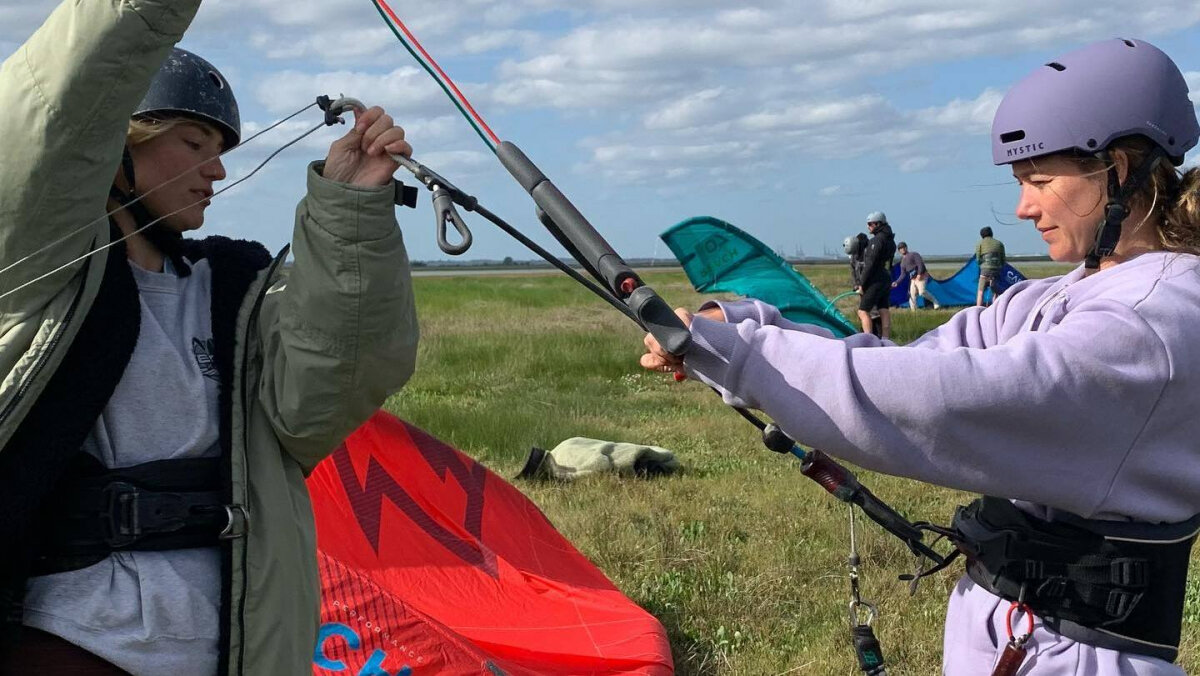
For already certified IKO Instructors who want to work in Italy, it is possible to directly request the conversion of their IKO Kitesurf Instructor certification from OPES/CONI, obtaining the National Diploma as Kitesurf Instructor OPES/CONI - Sailing Instructor, discipline DV005 - Kiteboarding, according to the requirements of the National Sports Qualifications System SNaQ.
The procedure requires filling out a form, paying an annual fee to OPES/CONI, and submitting the necessary documentation. Once the conversion is completed, the OPES/CONI certification will be issued.
The steps to follow are:
- Fill out the conversion application form downloadable from the IKO/OPES website. You can find the request form here: OPES/IKO Conversion.
- Attach your IKO Kitesurf Instructor certification to the email.
- Attach the receipt of payment of the annual fee paid to OPES/CONI, currently €15.00: payment to be made by bank transfer to O.P.E.S. - Organizzazione Per l’Educazione allo Sport - Via Salvatore Quasimodo, 129 – 00144 ROME.
- Cod IBAN: IT11L0538703208000001088781 – BIC/SWIFT: BPMOIT22XXX
- Banca Popolare dell’Emilia Romagna
- Specify in the reason for payment: "conversion IKO/OPES name and surname".
- Send all documentation to the following email address:
- OPES/CONI will issue the new certification.
It should be noted that the OPES/CONI equivalence applies only to IKO Instructors with a valid certificate. If the IKO certificate has expired, the OPES/CONI equivalence will not be valid, but you can attend an IRC course (Kitesurf Instructor Reinstatement Course) for reinstatement.
The agreement, in force since 2020, has an annual duration and is tacitly renewed in the following years.
The national contact person for OPES/CONI for maintaining relations with IKO is Andrea Frateiacci.
Some Italian IKO Centers offer certification conversion to their instructor candidates.
To facilitate instructor candidates, some Italian IKO Centers offer to cover the cost of converting the IKO - OPES/CONI certification for their candidates, including it in the cost of the professional ITC course (Instructor Training Course).
To ensure that the certification conversion is included, contact directly the IKO Center where you will attend the professional instructor course (ITC - Instructor Training Course).
Joint Commitment.
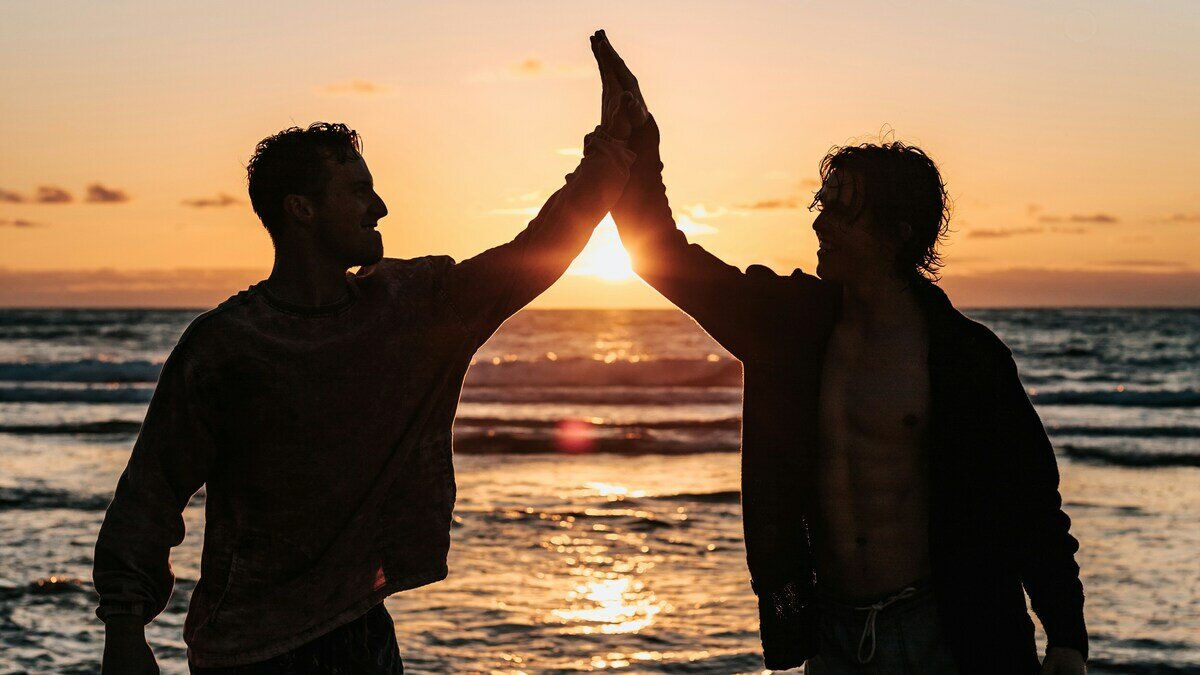
This collaboration represents a significant step towards a safer, more professional, and fairer sports future for kitesurfing in Italy.
This joint commitment to excellence in sports education reflects the determination to promote high standards in the sector, ensuring a professional and safe environment for all kitesurfing enthusiasts in Italy.
Author: Marica Moda
How to make a theoretical kitesurfing lesson interesting.
You are a good instructor if you are good at teaching. It sounds like a silly concept, but therein lies the essence of our profession.
To teach means to present and provide information or instructions in a manner that suits the learning abilities of others, while also adding passion and creativity to the process.
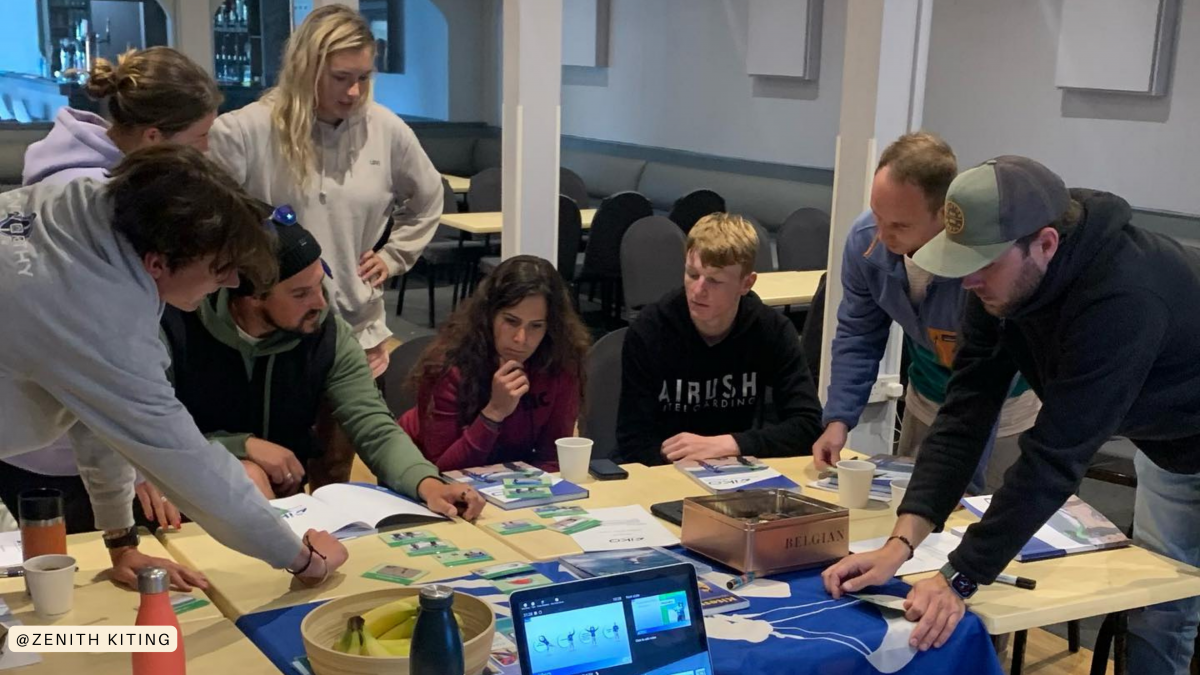
Knowing "what to teach" doesn't mean knowing "how to teach" it.
If you are an IKO Instructor, you must understand that it's not sufficient to only know how to kitesurf; you must train yourself and be focused on teaching techniques to address "how to teach" the theoretical part, not just the practical aspect.
To be a good instructor, it’s necessary to explain both topics well. For a student, the theory of kitesurfing is an essential part of the learning process as it helps them understand the principles and techniques behind the sport.
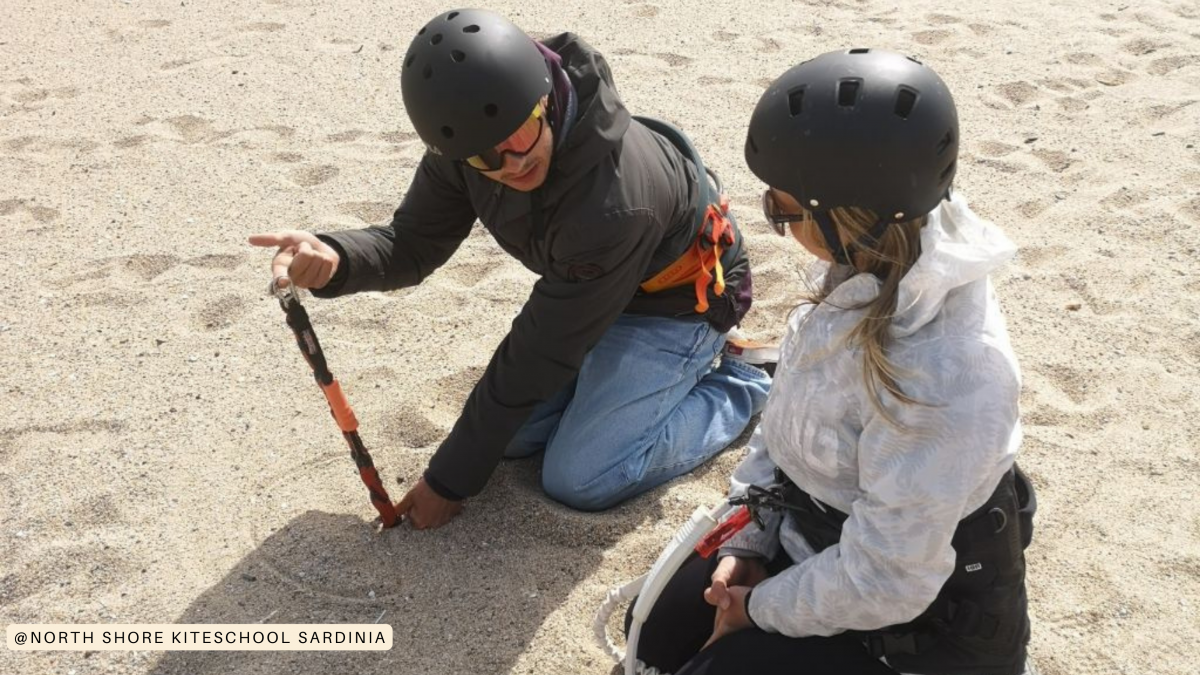
We want to give you some tips on teaching a kitesurf theoretical class.
Here are some steps you can follow to teach theory to your students effectively, to keep the quality of your lessons high, and give you the tools you need to be a successful instructor of kitesurfing theory.
The better you are, the more KISS - Keep It Short, Simple, and Fun you will be!
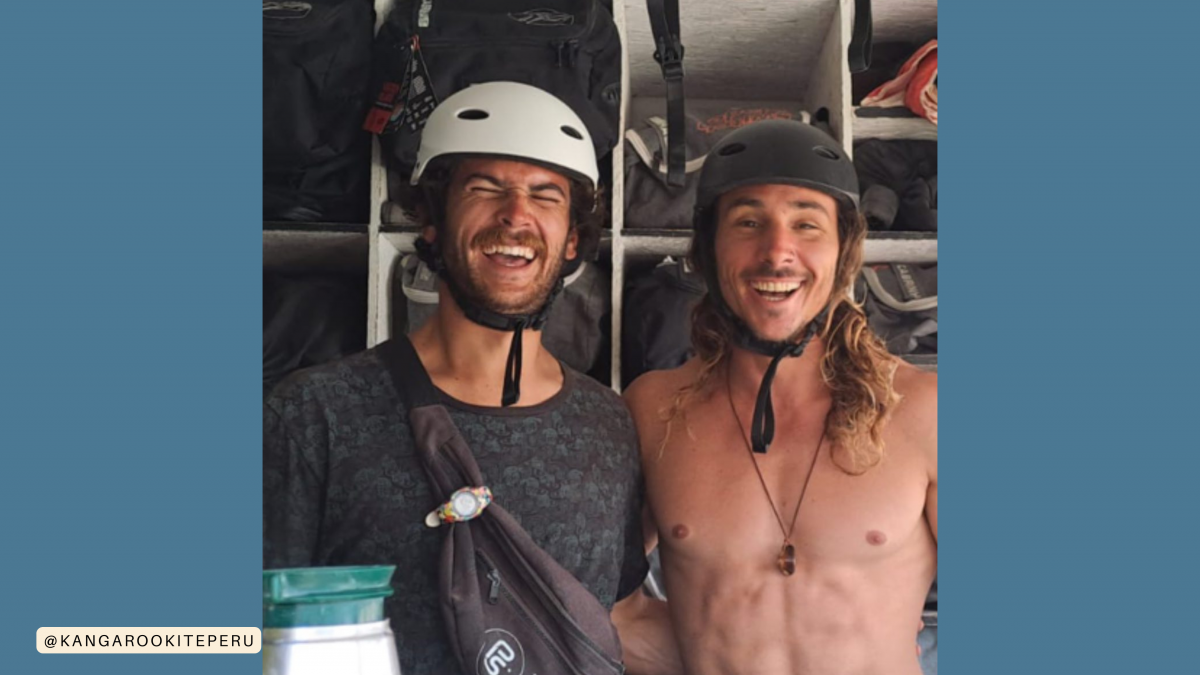
Prepare a lesson plan you will follow, but use it only as a guideline.
Plan the lesson beforehand,but be ready to adapt and modify the plan during the lesson if necessary.
- Take notes on the topics you will cover.
- Don't write a script, just the key points that you will then go into more detail.
- Prepare all the necessary equipment.
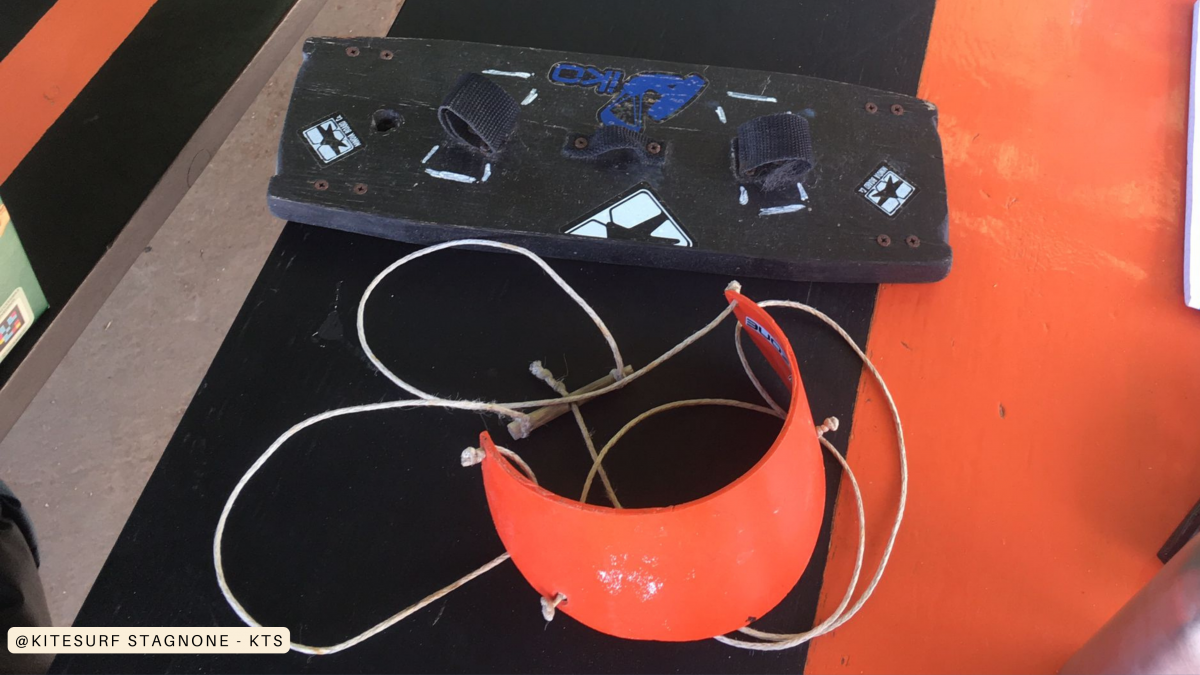
What does a theoretical class need to include?
- Introduction: Describe what the objective of the lesson is and why it’s important.
- Feedback: Ask your students what they already know about the topic.
- Key points: Include 3 or 4 important points for students to remember at the end of the lesson. Use them in the introduction, during the lesson, and at the end to summarize.
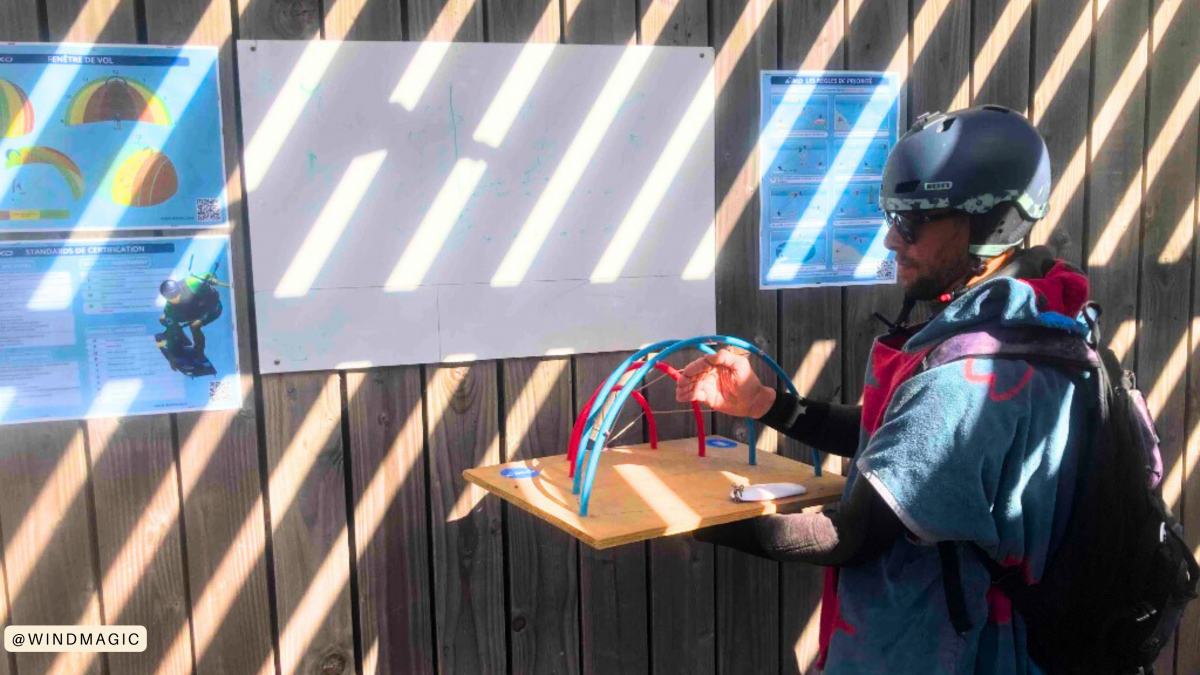
Your communication skills are very important.
Creativity is the key to being a good instructor during a theory lesson.
- Speak loudly (but not too loudly) and clearly.
- Don't speak monotonously; instead, moderate your tone and change your voice according to your explanation.
- Maintain eye contact.
- Consider the cultural aspects of your students and respect them.
- Use different communication channels.
- Use various tools such as computers, smartphones, whiteboards, sandy beaches, 3D models, and simulators - large or small. Give your creativity free rein..

Interact with your students.
- Involve your students in the lesson to keep them engaged and focused.
- Avoid asking closed-ended feedback like, "Do you understand?" - "Yes/No." Let them explain what they understood in their own words and provide constructive feedback to help them improve their skills.
- Encourage your students to continue learning and exploring the sport even after the first lessons. Offer them resources such as instructional videos, apps, ebooks, and websites, where they can further enhance their understanding of kitesurfing theory.
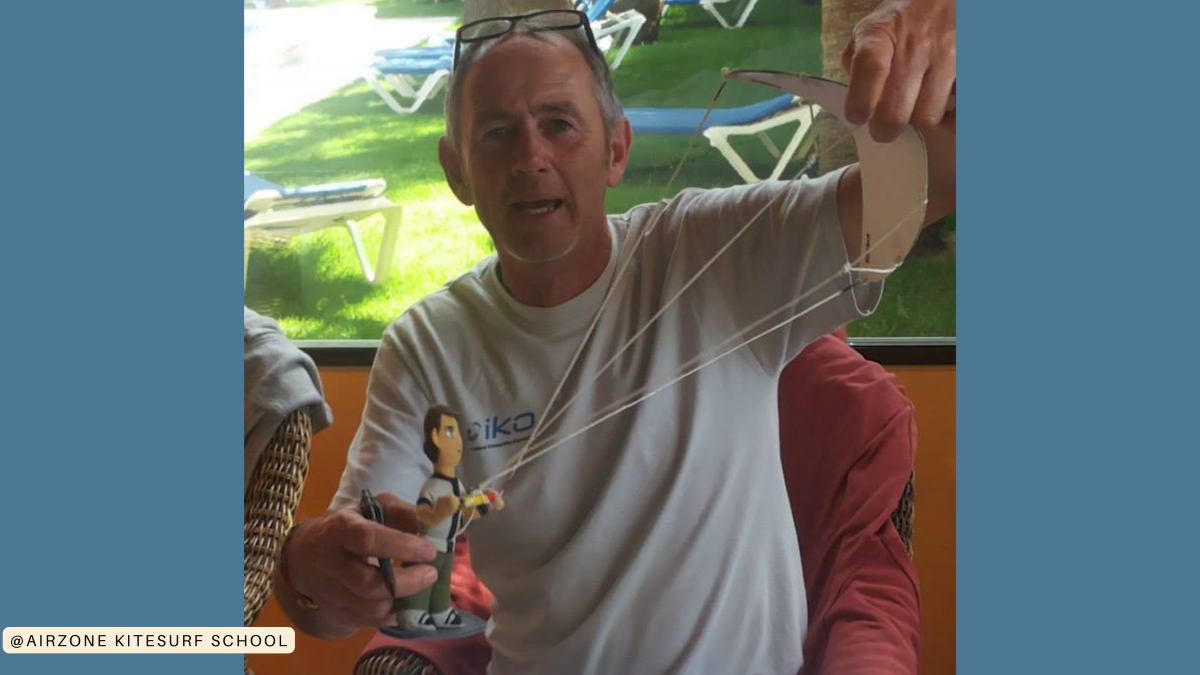
Theoretical kitesurf topics.
During your kitesurfing lessons, you may need to explain some theoretical topics. You can develop these topics using a whiteboard, a computer, a smartphone, posters in the school, or even 3D models and simulators. Unleash your creativity and imagination to make the 3D models and simulators, and your class will be a success.
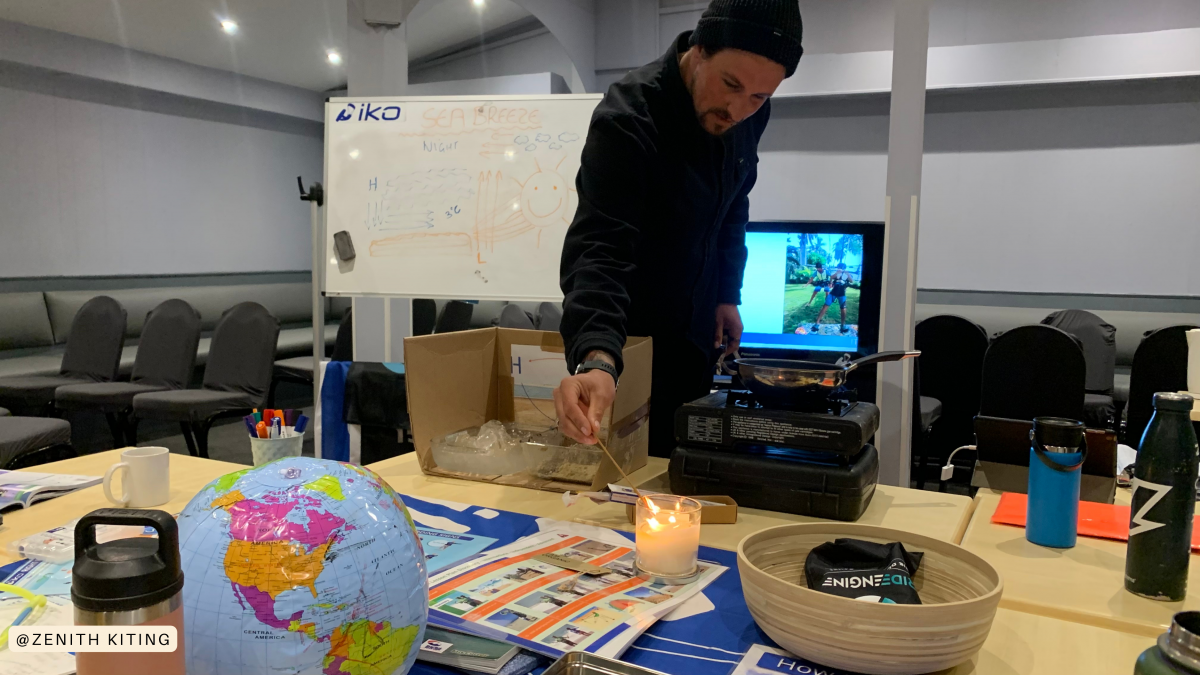
The topics you might need to cover during your kitesurfing lessons on a theoretical level are as follows:
- The five wind effects.
- Sea breeze diurnal and nocturnal.
- Tides.
- Basic principles of aerodynamics.
- Sea marine currents.
- Meteorology, High and Low Pressure.
The five wind effects:
1) The Venturi effect.
2) The wind shadow.
3) The wind gradient.
4) The Bay effect.
5) The compression effect
TIP
Focus on the dangers and possible benefits of the five wind effects, like the impact of the space for riding, launching, and landing the kite safely, wave conditions, upwind and downwind riding, and the consistency and quality of the wind.
Draw the five wind effects. For example, if you have a whiteboard available, you can use it, but drawing in sand is also perfect. You can also use common objects in the school to illustrate the effects.
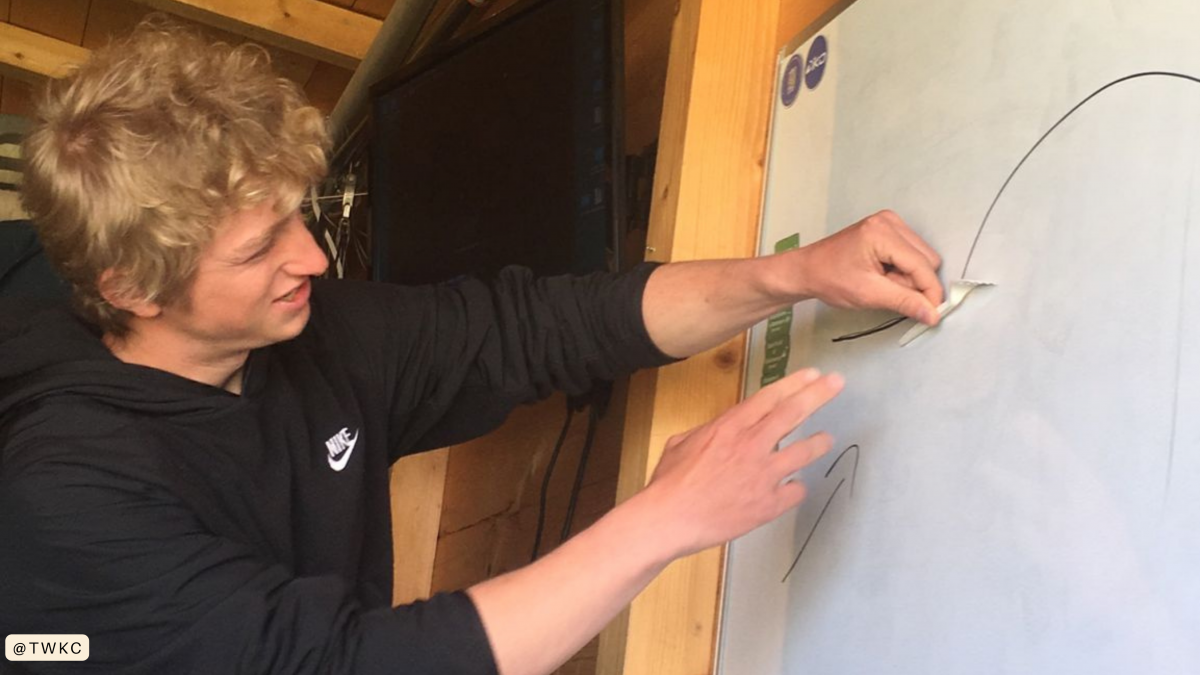
Sea breeze diurnal and nocturnal.
Explain how sea breezes are generated, when they occur, and the potential dangers they may present.
TIP
Focus on the impact of a sea breeze on a kitesurfing session, such as the change in wind strength, the eventual change in wind direction, and its duration.
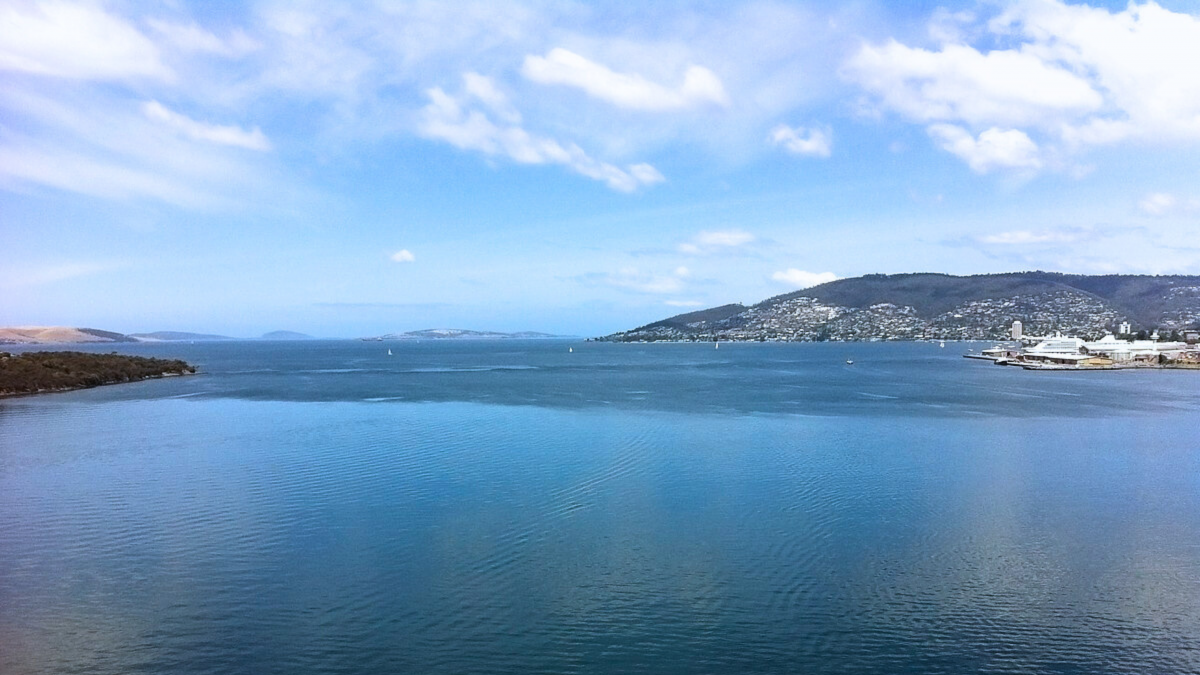
Tides.
Explain the potential dangers and benefits the tides can have and how they can completely change the spot.
TIP
Even if they don't have much impact in your spot, always consider that your students may visit places where having high or low tides can really make the difference between kitesurfing or not kitesurfing (an example is Sotavento Lagoon in Fuerteventura - Canary Islands).
Focus on how to maximize the kitesurfing experience and ensure safety. Explain to your students how to check tide charts or consult local knowledge to understand the tide patterns and their impact on the specific location where they plan to kitesurf. Being aware of the tide conditions will help them to make informed decisions and adjust the session accordingly.
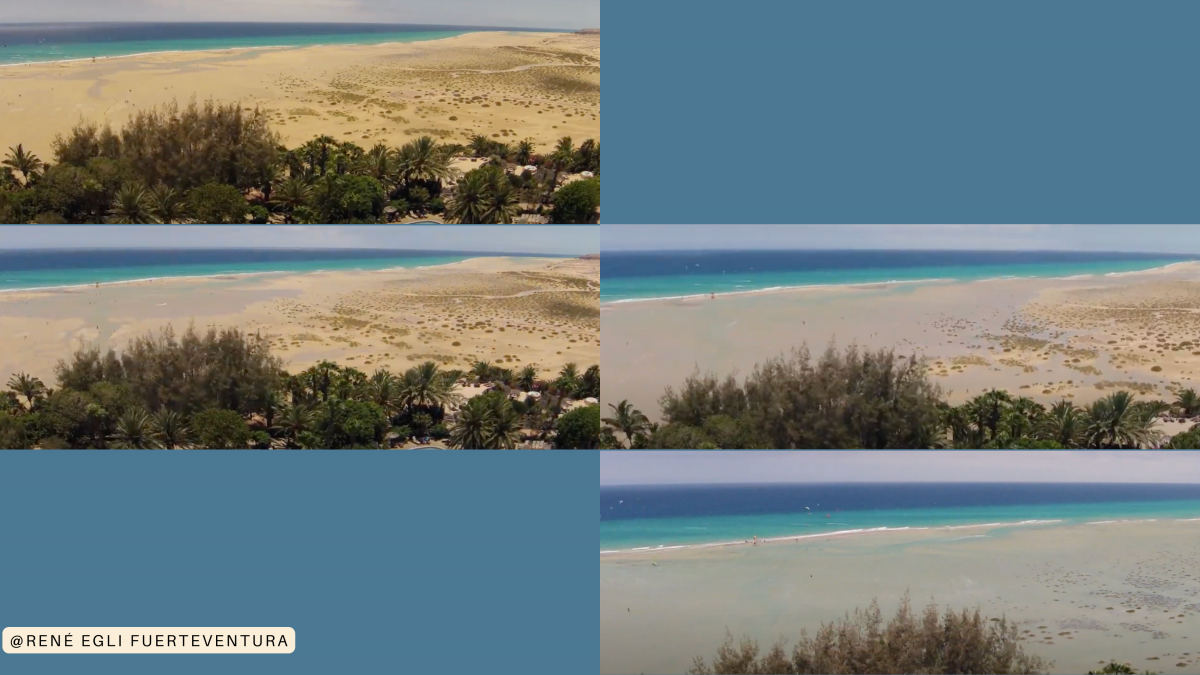
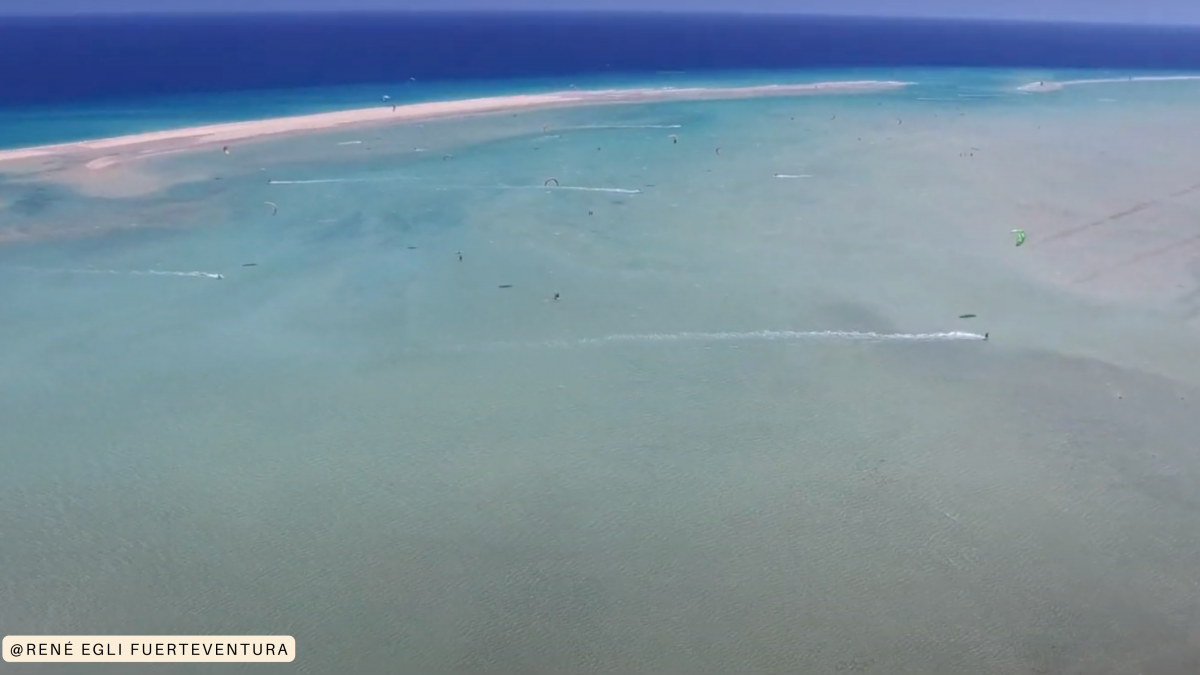
Basic principles of aerodynamics.
This topic is very technical and broad, so it’s fine to treat it in a simplified way, focusing on why kites fly and pull.
TIP
To help you with the explanation, download an app that simulates the wind tunnel.
This tool will allow you to make a complex concept visual and simple, making clear the forces generated once the kite is in the air.
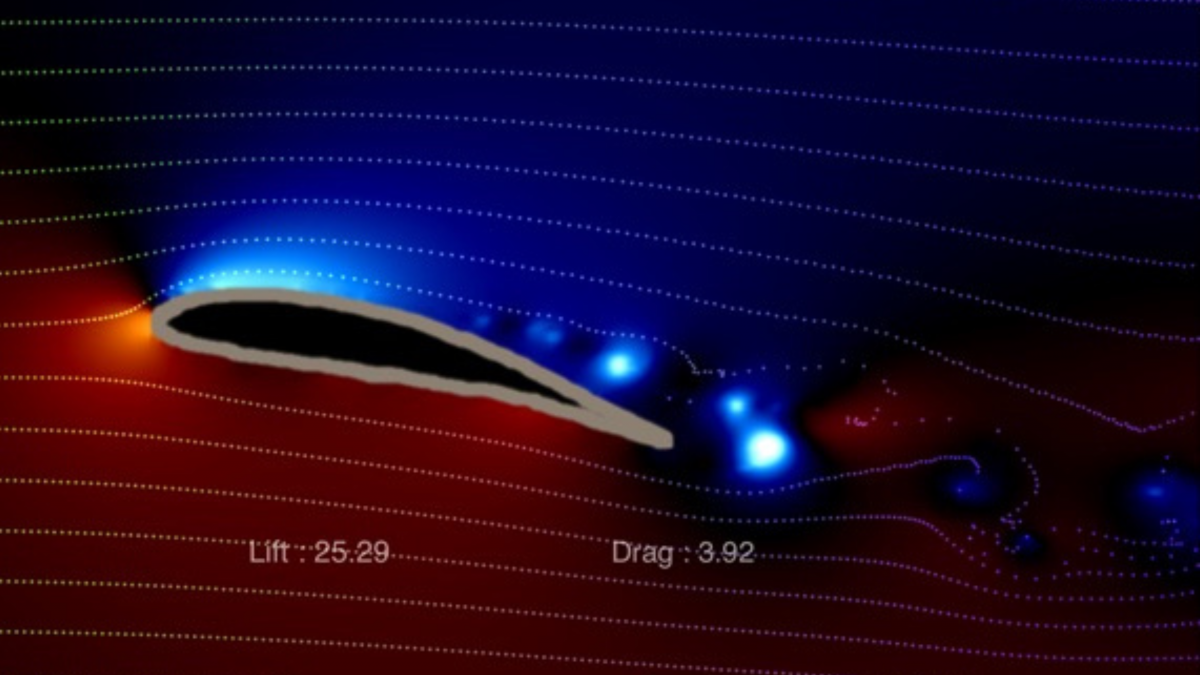
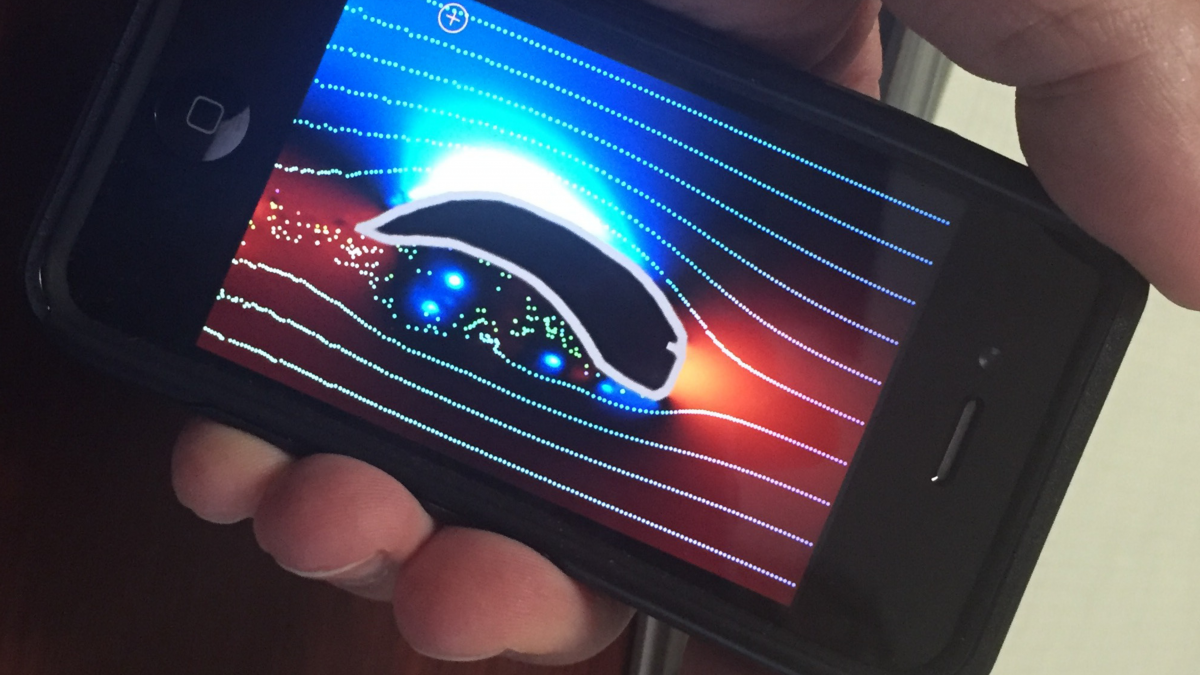
Sea currents.
Explain how to recognize sea currents and their potential impact on a kitesurfing session.
Draw your students' attention, particularly to rip currents, teaching them how to identify these currents and how to respond appropriately..
TIP
Download and print IKO's free posters on sea currents; they are free and make it clear how to act correctly.
Emphasize the importance of having a good understanding of the local conditions, including tides and current charts, as well as local knowledge from experienced kiters. Explain how to assess the current conditions before entering the water, adjust the riding technique to compensate for the currents influence, and prioritize safety by choosing appropriate locations and being prepared.
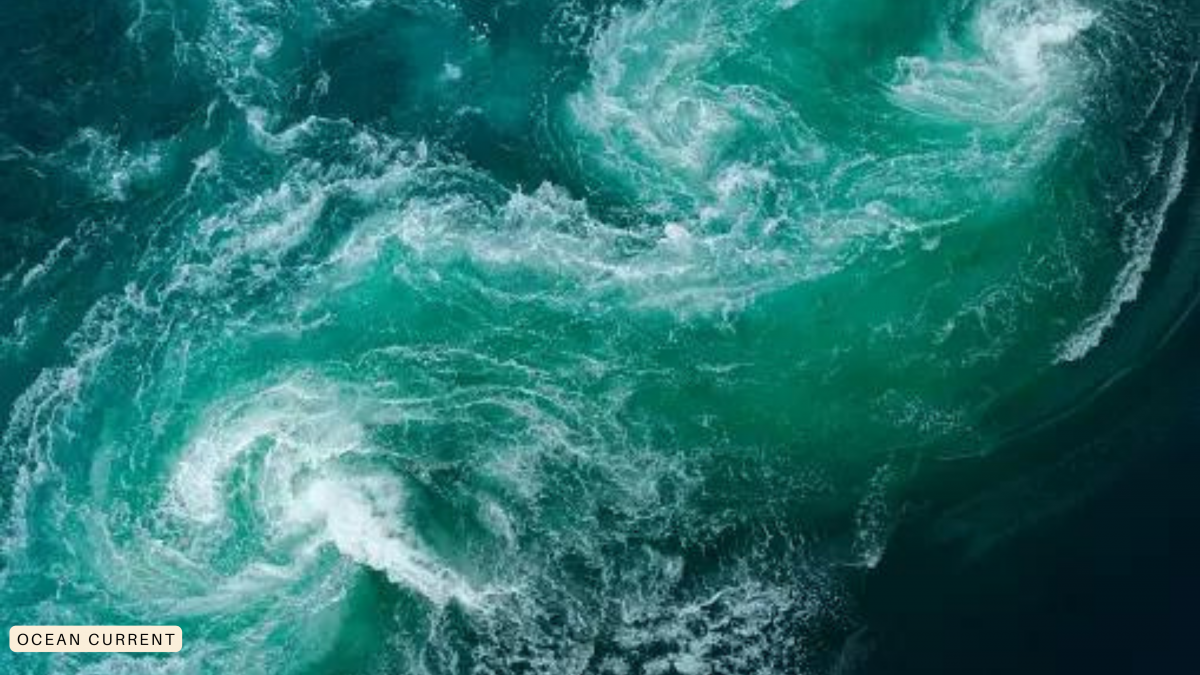
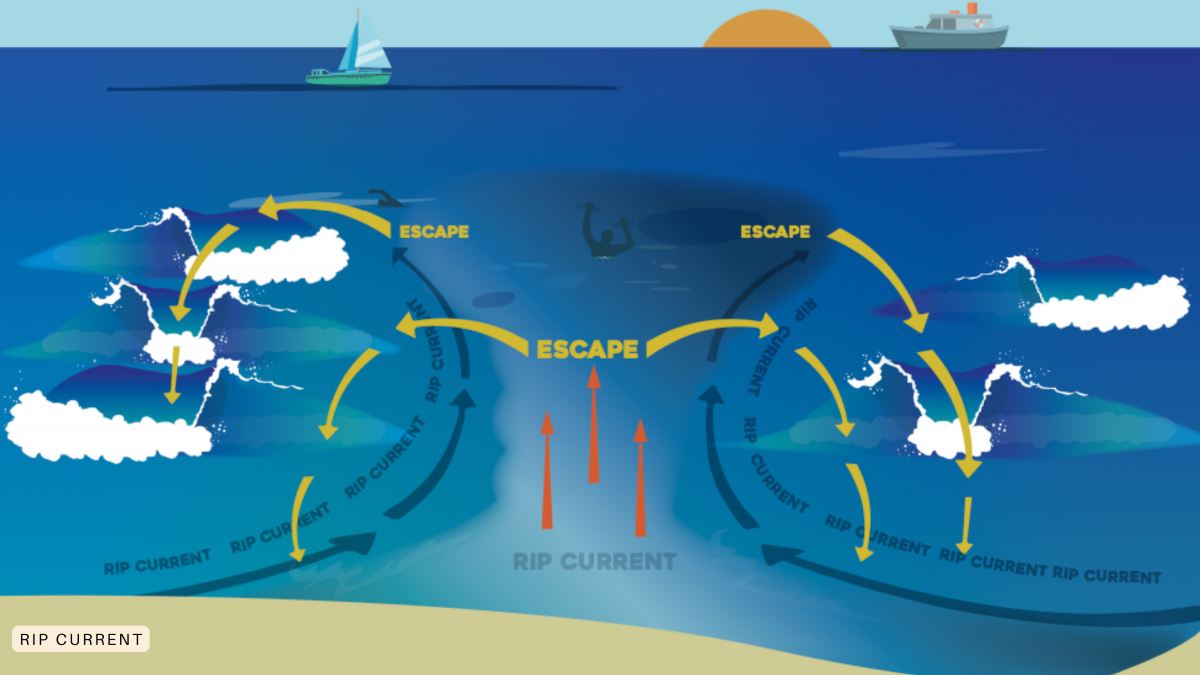
Meteorology, High and Low pressure.
Meteorology is a very complex and extremely broad subject. It would take many hours of class time to cover the topic, so we recommend that you approach it by focusing on the basic concepts of meteorology.
TIP
Focus on High and Low pressure and why they are essential for kitesurfing. Use the thumbs technique to memorize high and low pressure in the two hemispheres.
Also, focus on the impact of high-pressure and low-pressure systems based on regional and local factors. Advise your students to check the weather forecast, consult experienced local kiters, and assess the conditions on-site to decide if it is suitable and safe to kitesurf during specific high or low-pressure systems.
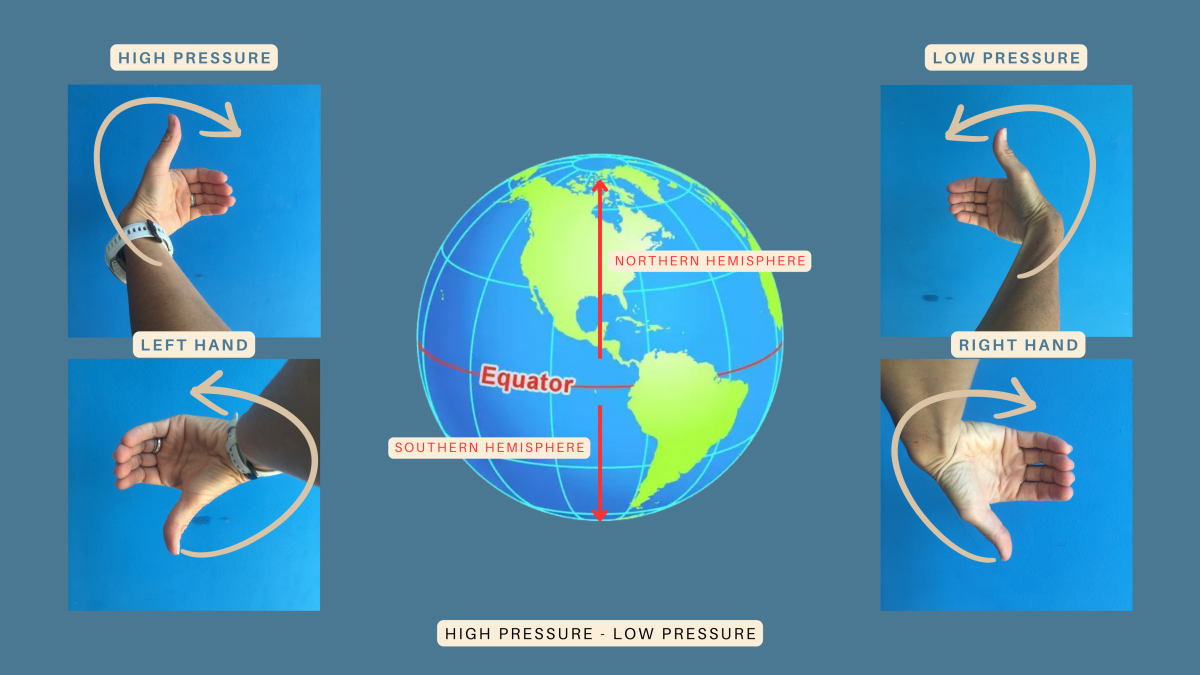
Practical kitesurf topics.
When teaching practical topics, remember to always follow the 8 IKO’s Steps Teaching Concept.
The IKO’s 8 Steps Teaching Concept.
The IKO teaching concept is based on achieving physical skills through a combination of your student's trial and error, along with your evaluation and correction.
Additionally, it involves developing your student's background knowledge and skill consolidation, ensuring they understand why they are performing an exercise.
The 8 steps are:
- Evaluation: Who?
- Set a goal: What?
- Incentivize and motivate: Why?
- Give reference points: How? When? Where? Which exercises?
- Get student’s feedback (1): Did the student visualize well?
- Observe: Student’s trial and error.
- Get students’ feedback (2): 90% of the learning process.
- Correct: Only when necessary!
Riding upwind.
Explain the prerequisites and, if necessary, discuss possible reasons for failure.
TIP
Focus your explanation on what combination of the kite, body, and legs/board your student should maintain.
Videos on the IKO App, a 3D model, or a small simulator can help your student gain an outside perspective and better understand what to do once on the water.
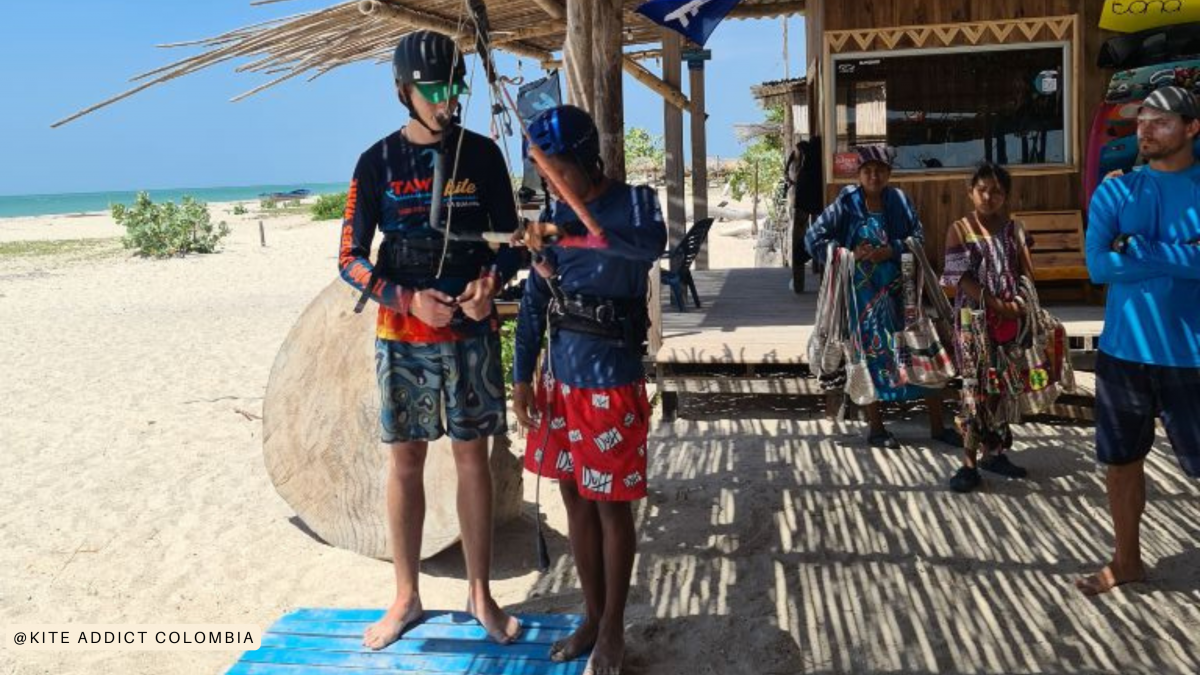
First jumps.
Explain the necessary prerequisites and discuss potential reasons for failure.
TIP
Focus your explanation on what combination of the kite, body, and legs/board your student should maintain; also, encourage them to practice with a physical simulator.
Using a physical simulator can help reduce the stress of trying something new before attempting it in the water, and it aids in building muscle memory.
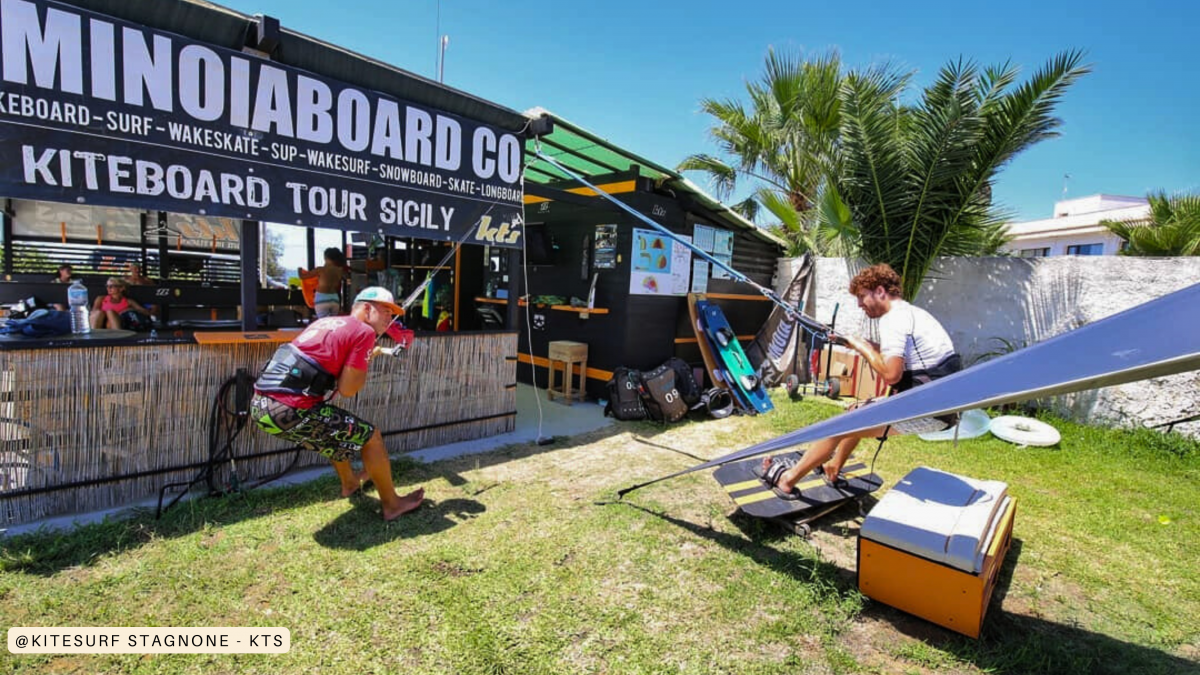
Remember to adapt your teaching approach to your student's learning style and pace. Create a positive rapport with your student. Be funny, dynamic, patient, and supportive, and promote a safe and enjoyable learning environment.
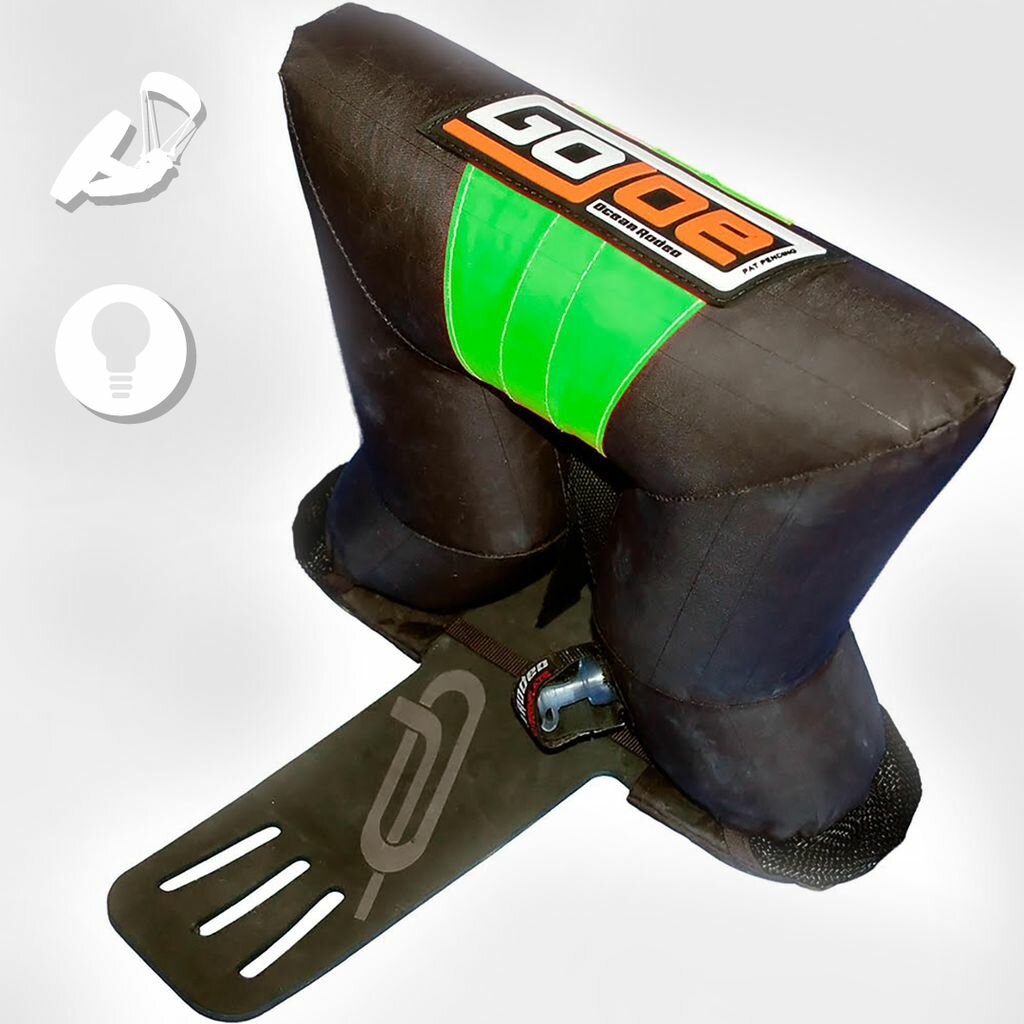
What is a GoJoe? Have you ever heard of it? What about seen one or let alone used one? The GoJoe is a leash board recovery tool. It is an inflatable body that is designed to sit unobtrusively between your feet on the board. If you ever lose your board the GoJoe will make your board easily visible by flipping your board over for you and catching the wind sailing the board down the wind so that it is never far from you after a crash or hard landing.
Some schools and instructors around the world are using them; now the question is… should you? The truth is that it is not always necessary but it can be useful. It is an awesome tool for students with difficulties to get the board back or places with strong currents that make the board harder to rescue.
GoJoe is the perfect solution for people who are afraid to stop using their board leash because of the difficulties they have body dragging or the conditions at their spot. Many people who are still using a board leash believe they are not dangerous as they have yet to have an accident with one.
If the GoJoe is an idea and concept you like though you do not want to invest the money, another alternative is buying an arm buoy for kids and inflating it around your board handle. This won’t be as effective though it will still help with board recovery and save you money.
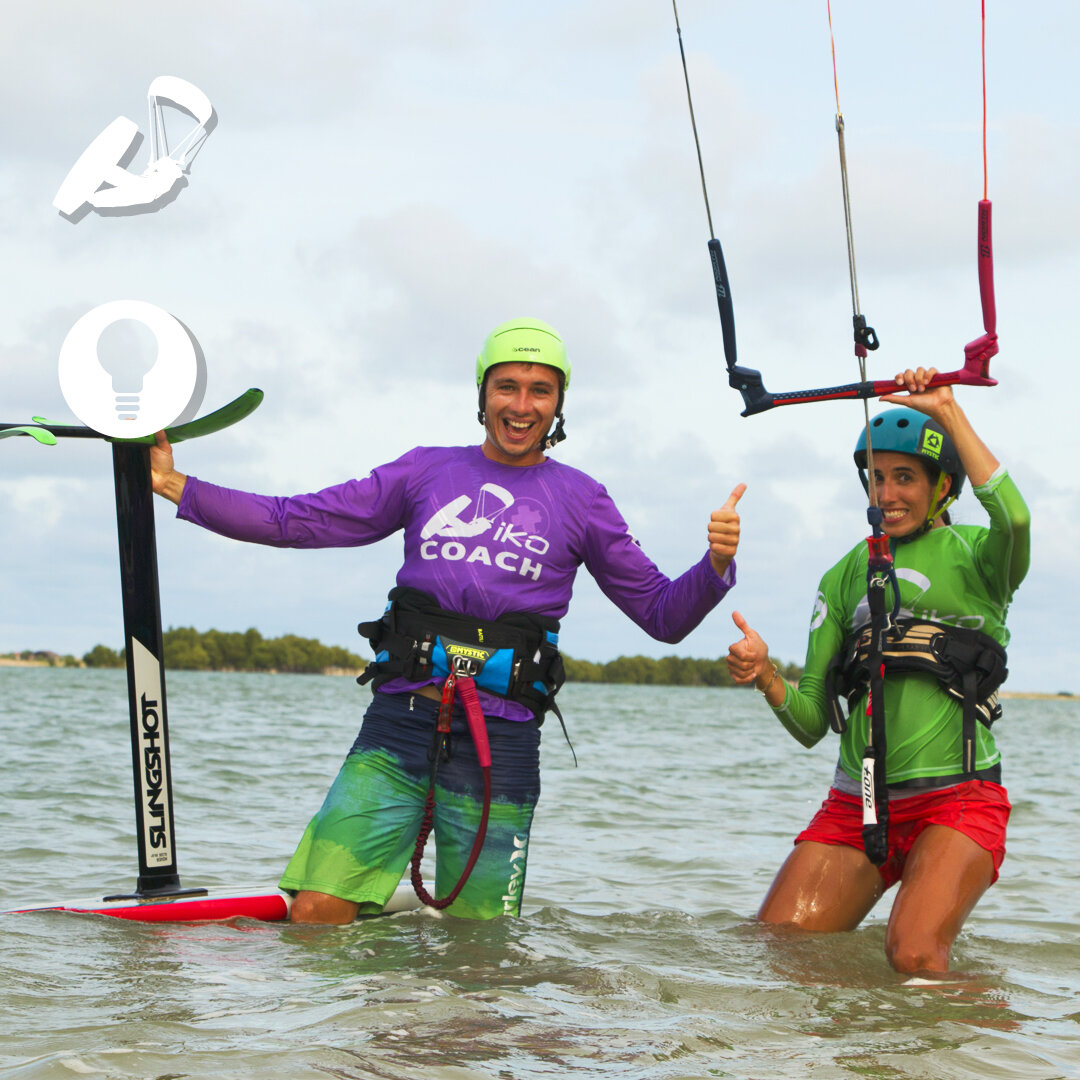
There is no question that hydrofoiling is growing extremely rapidly across the world. More companies are making boards at different price ranges, new hydrofoil competitions are emerging, schools are beginning to offer lessons and hydrofoil board rentals; these all signs of a growing industry.
When learning to hydrofoil at an IKO center you will be receiving an impact vest, helmet, and proper instruction. As the trend has risen we hear more and more horror story of pirate instructors who do not have proper progression or safety measures “teaching” others how to hydrofoil only to have them get injured.
It is important that no matter your level when you are learning and throughout your progression to continue using an impact vest and most importantly a helmet. We have unfortunately witnessed far too many hydrofoil board accidents. Hydrofoil accidents are worse than most other forms of accidents as with a hydrofoil it usually ends up being deep flesh wounds.
What we have seen is that whether or not someone who is hydrofoiling agrees with wearing safety protective equipment or not, eventually they convert after a close call or accident.
So what do you say? Should you always wear a helmet and impact vest when hydrofoiling or no point?
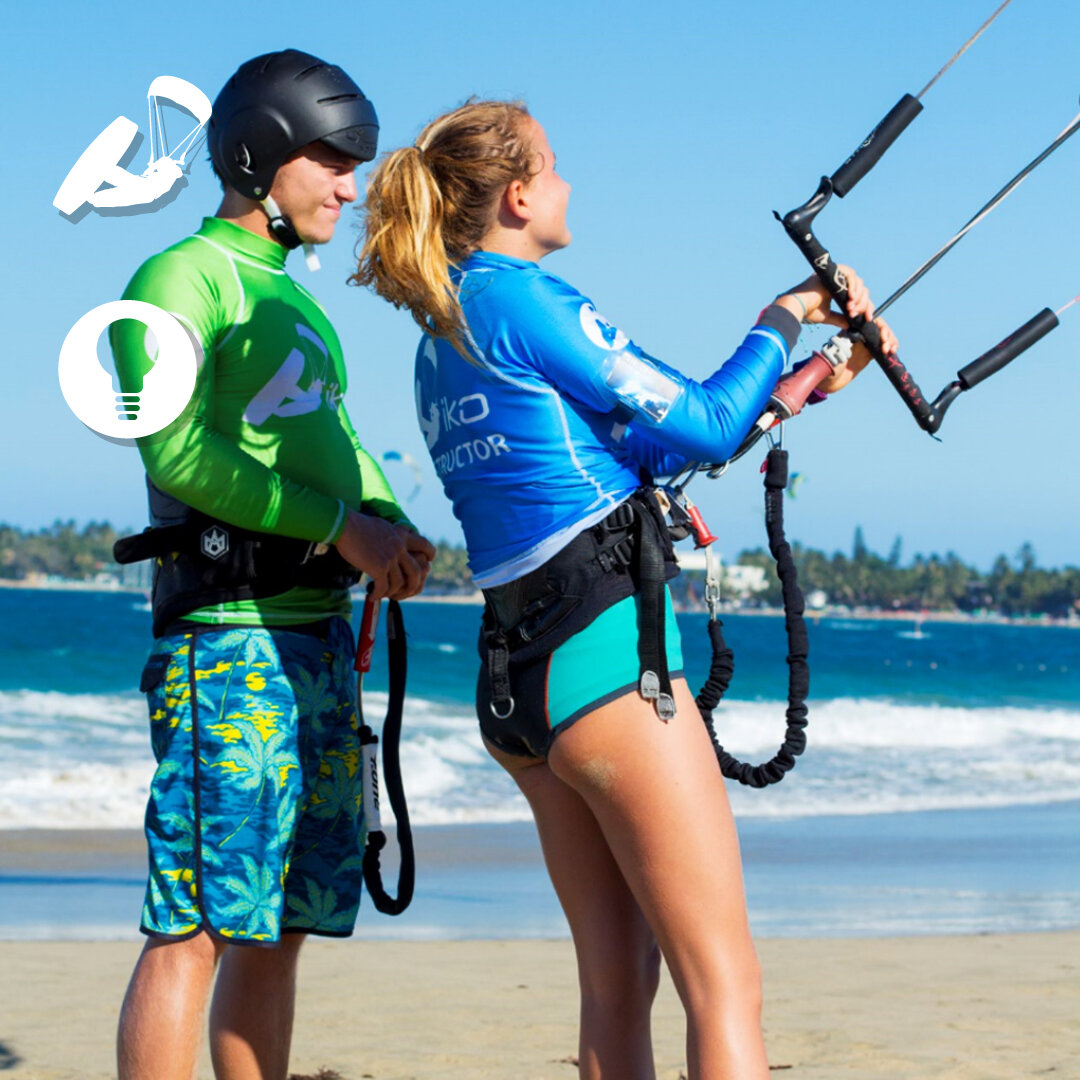
This is one of the main safety improvements from the last years. IKO has set this new standard for both students and Instructors. The kite leash must always be connected in the front part of the pilot’s harness. However most of the kiters, Instructors and students still have it connected on the harness handle with no special reason, just because ‘everybody does it this way’. There is a huge difference in terms of safety, whilst in the front, the quick release of the kite leash will always be easily accessible for the pilot; when connected to the back, in a serious situation (kite still looping), the pilot cannot access it and is in danger. Many accidents have happened this way, do not let it happen to you. If you do not unhook it is strongly recommended to use a short leash.
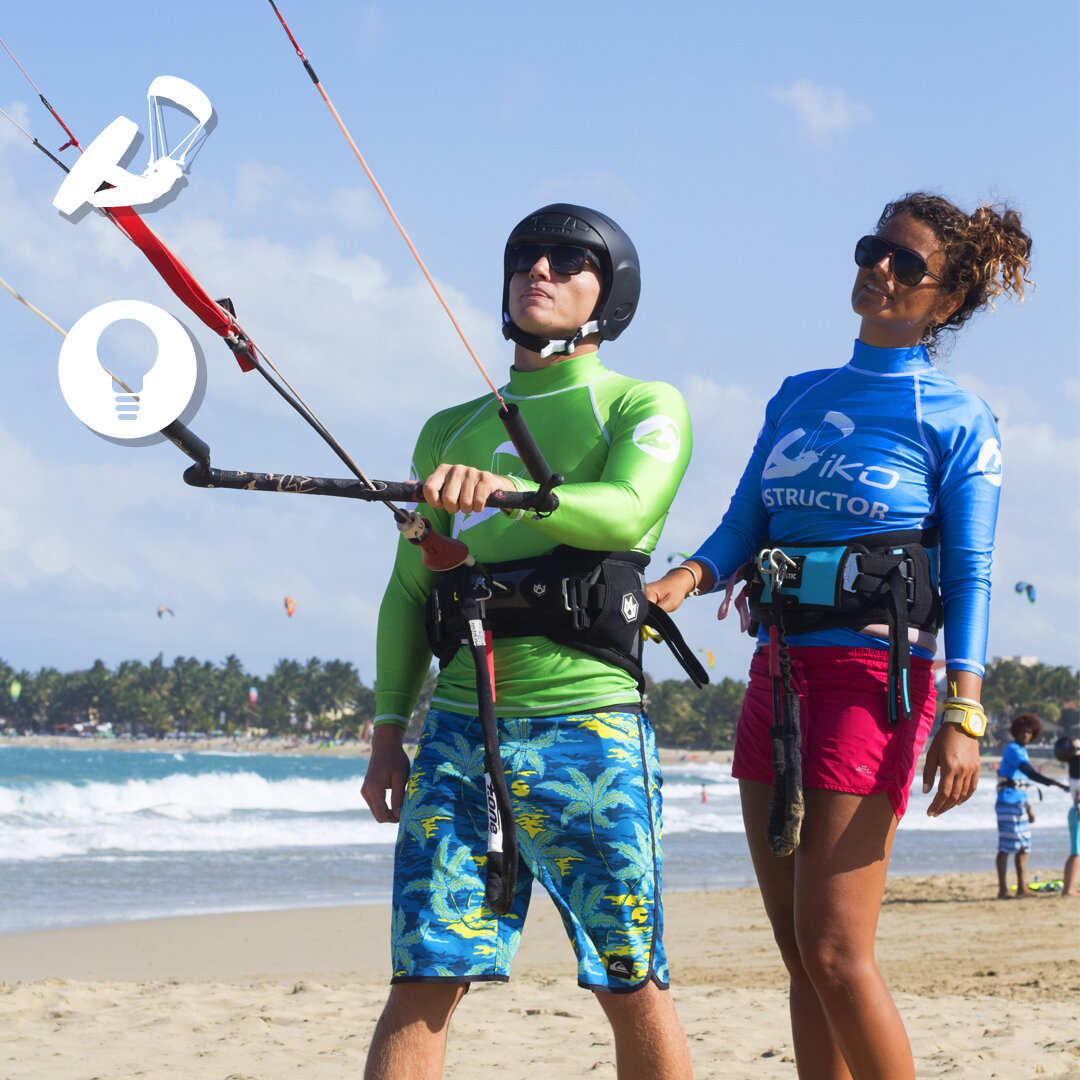
How curious is the fact that despite science and logic, sometimes us humans behave against what we instinctively know is beneficial for us; like eating clean and healthy, wearing a helmet while doing extreme sports and investing in pair of polarized sunglasses when out in the sun near water or snow to name a few!
Just like with helmets, wearing sunglasses while kiteboarding seems unfashionable and excuses like “I will lose them”, “They are annoying”, “They are expensive”, “Water droplets on the lens bother me” and so on, seem to always come up.
Truth is companies have filled all these gaps offering a range of options with different styles, price points, fits and a wide variety of options. So what is holding all us kiters back from wearing sunglasses while kiteboarding?
We believe that it is the social norms of the majority overriding the logic. If all the professionals, instructors and kiteboarding promotions wore sunglasses while riding, competing, teaching it would make people think twice… “If these people are wearing them…. maybe I should too.” Although it is not the case, just like with helmets. Only a few wear it and so it’s not really popular.
The use of polarized sunglasses, in general, will help reduce the chances of cataracts, macular degeneration, sunburn on the cornea and the risk of experiencing vision issues like “snow blindness” which can and have happened to kiters before.
After taking time to research we found many companies that offer sunglasses specifically for kiteboarding. We have found these top-rated companies offering a variety of different styles, prices, and features that are excellent for kite use: Kurtis Eye Wear, Ocean Glasses, Sea Specs, and Lip Sunglasses! We know there might be many more companies out there and if you are currently using one of them let the community know which you use and recommend!
So the question is do you already wear sunglasses and if not when will you start? Don't see the point of wearing sunglasses? Tell us why in the comments below!
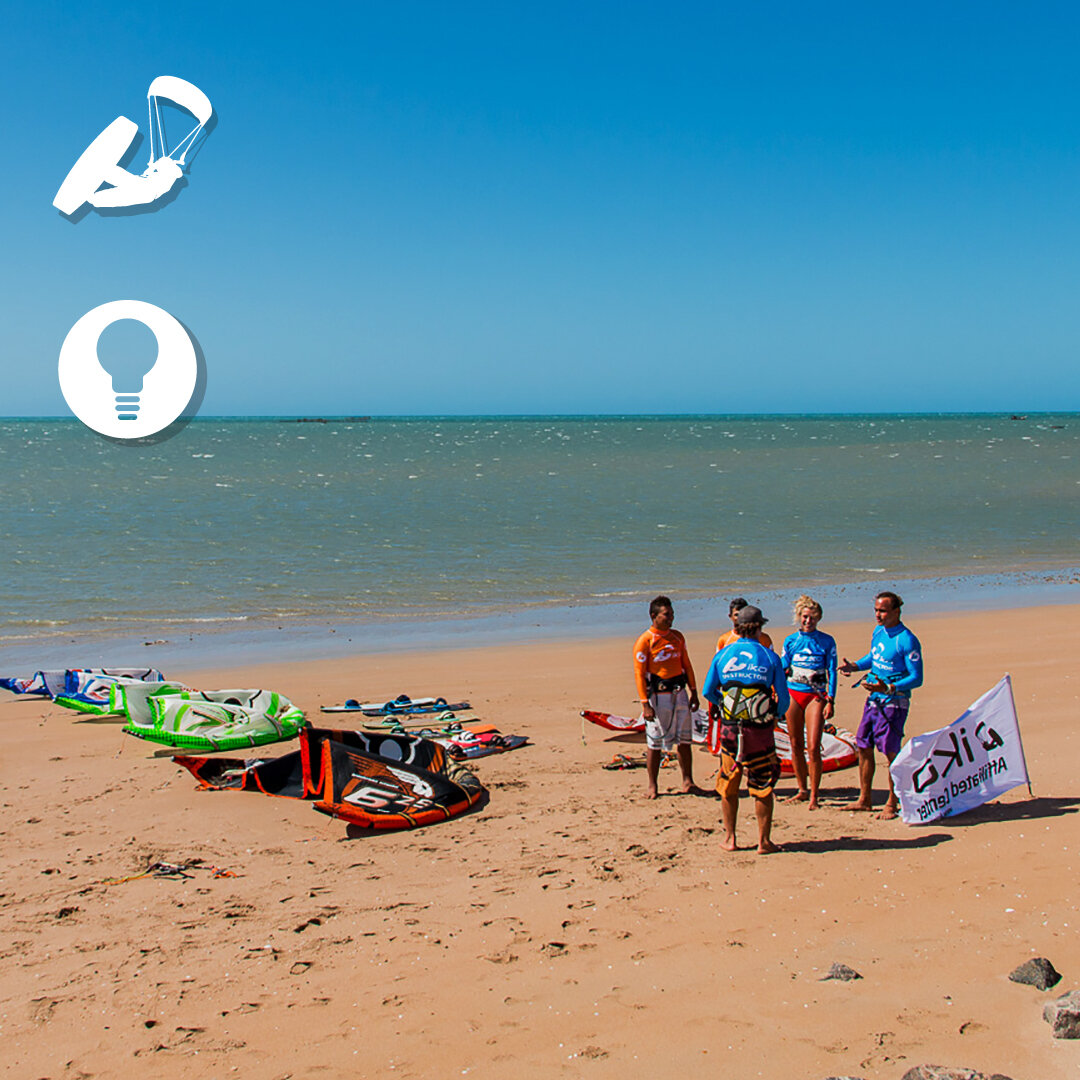
This is always ‘the’ question every kiter asks several times a day and will probably get different answers each time as there is no truth here. It depends on many factors; obviously, the wind strength and your weight matters but not only! Wind density will also be a key factor even if not many people are aware of it. A colder wind will be stronger than a warmer wind of the same speed. The size of the kite will also depend on your riding style. Are you more a strapless rider (smaller kite) or a freestyler on boots (average kite) or an old school rider who wants a bigger kite to stay more time in the air? The length of your lines also has a great impact on the power developed by your kite. All these aspects are discussed in an IKO Evolution Clinic and/or an Assistant Instructor Course.
Check out the IKO Training Calendar and join this training.
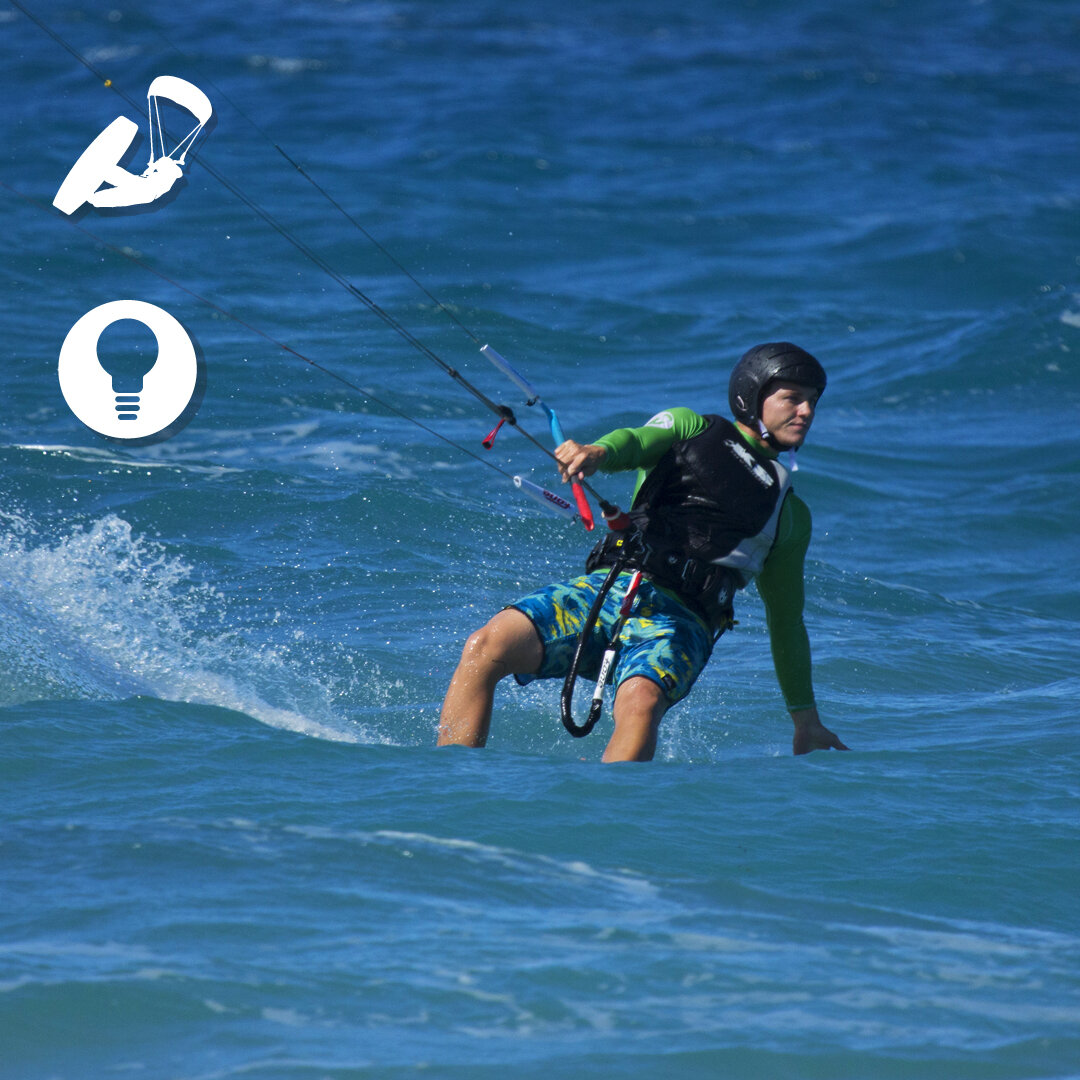
The most common thought for those who are thinking to get into kiteboarding is the strength and fitness aspect. Most imagine that to kiteboard you must be incredibly fit and healthy. Unfortunately/fortunately this is not true; virtually anyone can kiteboard!
We have seen it all from the ultra-fit hardcore athletes to the weekend warriors making it happen and having fun out in the water. That is the beauty about kiteboarding, anyone can get into it. Kiteboarding can become as challenging as one makes it. If someone wants to push the boundaries and go to the extreme or simply cruise around - the individual can choose as one wishes.
Overall, when you are kiteboarding you are putting in an effort, though, with the technology and equipment today it is way less demanding than it used to be in the very beginning. Essentially your core stability, upper body strength, and aerobic fitness are what are being taxed when kiteboarding. These three areas will be used when kiteboarding so if you are thinking to train any area of your body for kiteboarding consider those three.
Your upper body strength will help you carry your equipment in and out of the water as well as steer your kite efficiently. Having core strength will help reduce the chances of bodily injuries and maintain comfort during those long sessions. The only way to have long sessions though is having a healthy heart and good lungs especially once you begin trying to push your limits with tricks or stronger conditions.
An active warm up before and deep stretching after your kiteboarding sessions will help maintain your aerobic fitness and prepare the body for repeated sessions day after day on and off the water!
Which preconceptions did you have before you started kiteboarding? Comment them below
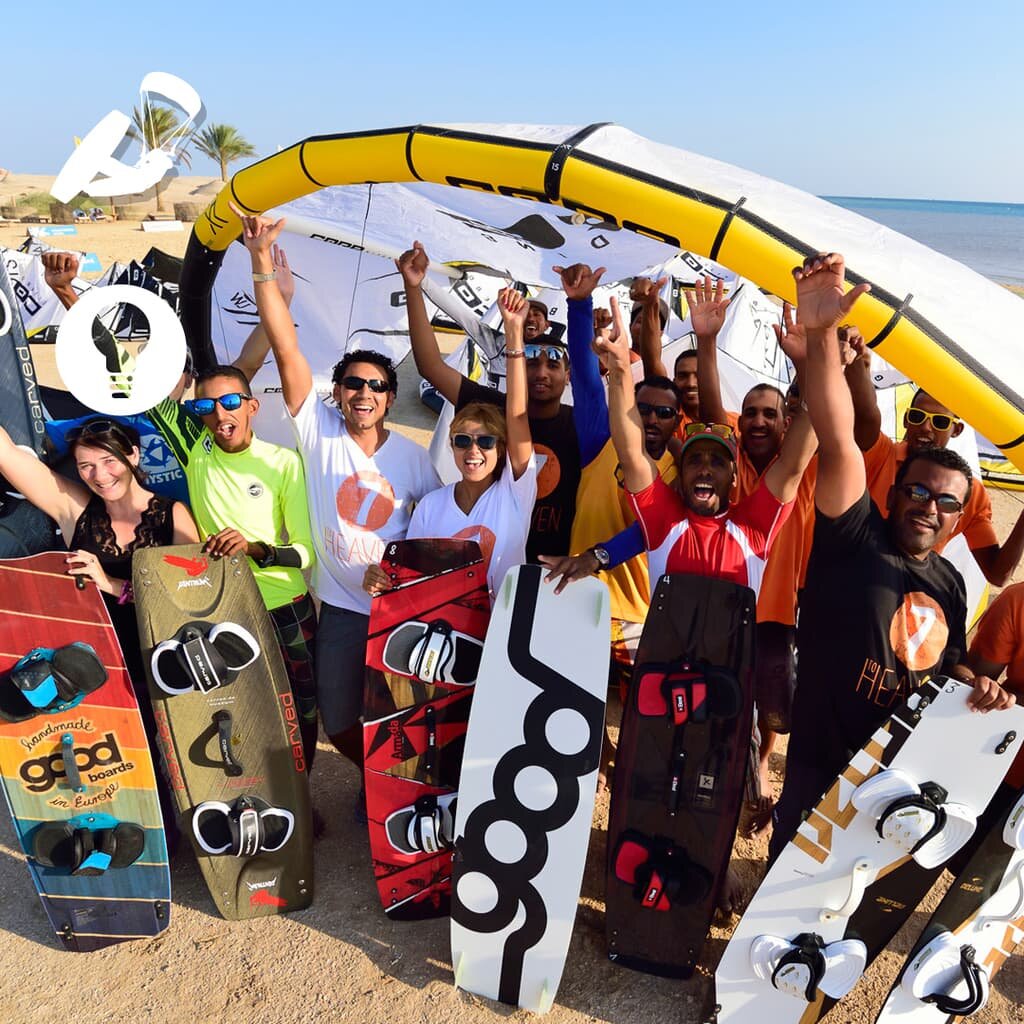
At one point or another in your kiteboarding career, you will consider buying equipment; it is pretty much inevitable. Once you begin thinking about buying gear, it might get overwhelming and confusing (this is common).
When considering to get your own equipment we have a few recommendations that are mentioned in other tips (browse our website and social media feeds to read them). Basically, though you will have four alternatives when buying equipment. Either you will be buying second hand, new of the year equipment, new closeout sales from previous years and/or the fourth option which is bought through the IKO Member deals.
Member deals are exclusive deals for the IKO Community which allows access to the latest and greatest equipment from some of the most known kiteboarding brands on the market around the world at a special price.
Buying second hand or close out equipment is a great way to score a deal though just make sure in both instances - that the kites are fully functional and ready to go in the water. When buying new equipment whether through a dealer or seizing an IKO member deal special rate- you are in safe hands.
We generally recommend kiteboarders to get the latest equipment on the market new though… sometimes getting something that is one to three years behind is also a great way to expand one's quiver and or beginning ones kiteboarding quiver on a budget.
If you have not yet bought equipment which way are you thinking to get your first quiver? If you have been kiteboarding for a while - what is your preferred way of getting kiteboarding gear?
Let us know how you go about your kiteboarding purchases in the comments below-
Bonus for the IKO Community: Have you checked out the member deals available to you in your profile?
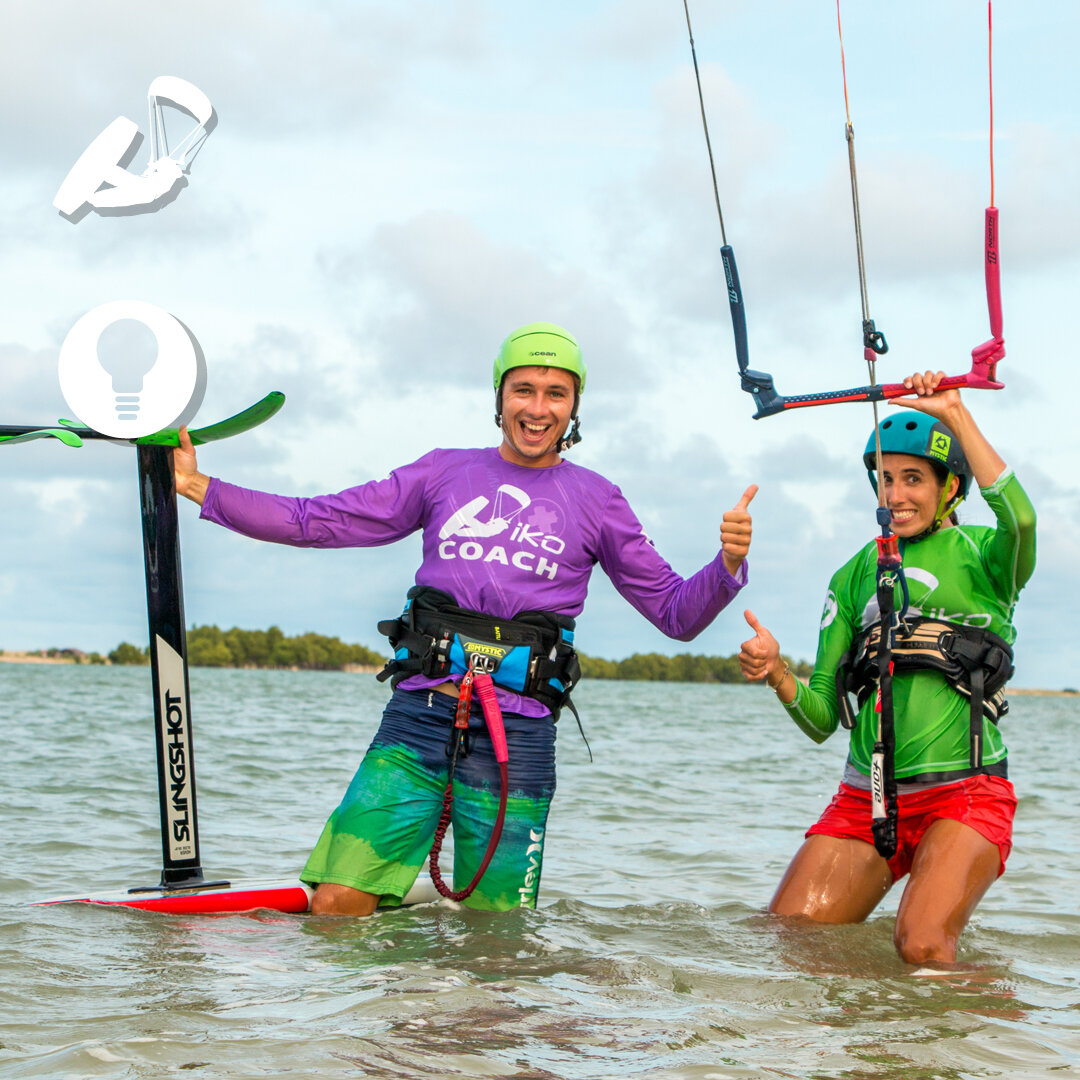
Have you taken measures to protect yourself whilst kiteboarding? Knowing the right of way rules (we had a tip about this two weeks ago) is one way to protect yourself while on the water though what about physical protection? Have you considered investing in an impact pfd vest? What about a helmet? These are the two simplest and most effective ways to physically protect yourself though can we go even further?
Some other ways the community has mentioned protecting yourself are by:
- Placing your leash in the front of your harness.
- Doing regular maintenance checks to your equipment. Especially your pulleys and lines.
- Using apparel to protect your skin and eyes during extensive kiteboarding sessions. Lycras with SPF, floating hats, kitesurfing glasses, and even sunscreen!
What other ways can we protect ourselves whether it is on and or off the water? Comment down below.
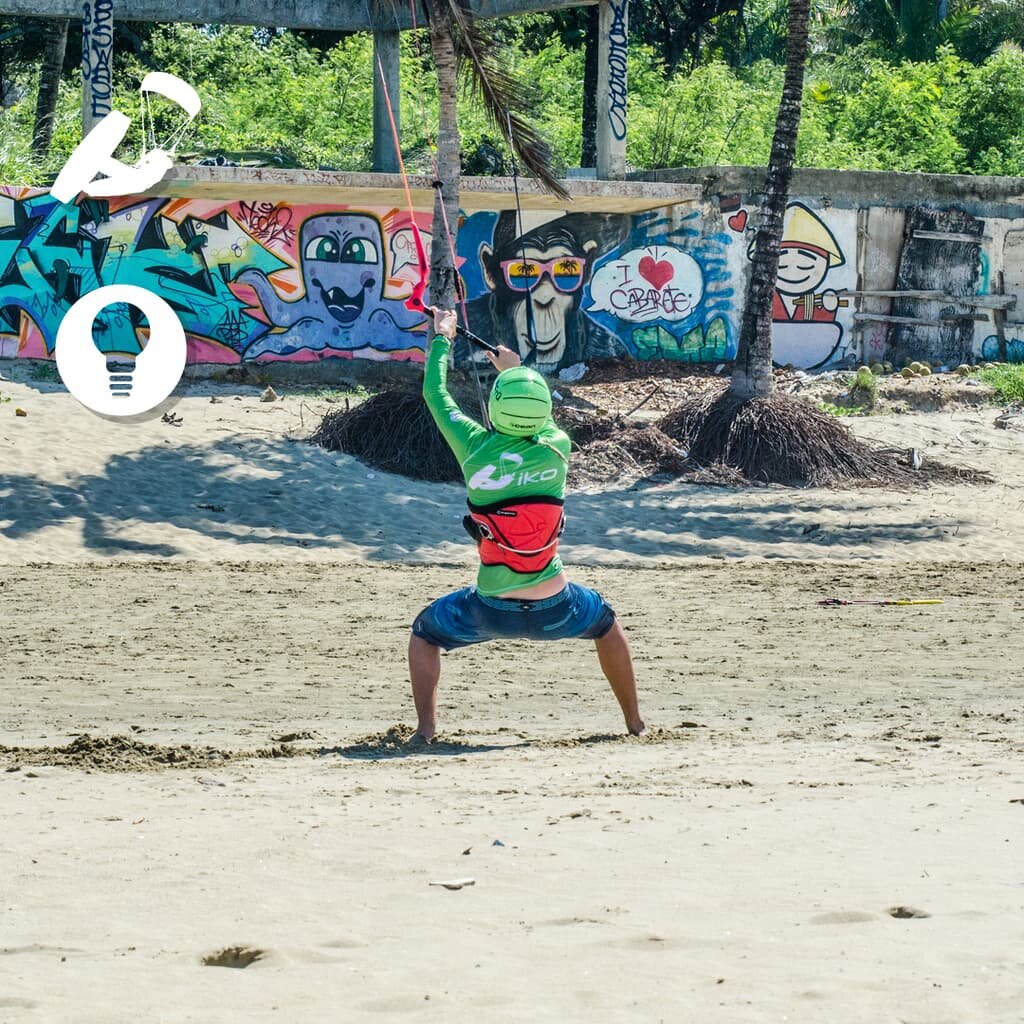
Most of us after watching extreme mega loop videos, king of the air replays or clips of wave riders going down huge barreling waves might become tempted to search for those extreme conditions and ride in them. These pro athletes featured in these videos make it appear relatively safe and easy. We do occasionally witness those brutal, close call, crash videos that we tend to forget about relatively fast.
Those 40 knots storm conditions or 8m tall swells might excite you though when those once in a lifetime “opportunities” cross your path you must take time to think twice. Going out in the wrong conditions can prove fatal. Becoming number one on the WOO Global Leaderboard must be done in as extremely controlled situations as possible and not simply “winged”. Same goes for larger swells and or a combination of strong wind and huge waves.
Kiteboarding is extreme enough - don’t enter extreme conditions because you might enter a situation that is extremely dangerous.
Examples of conditions to double think:
- If the wind is offshore
- 35+ knots
- -5m+ Tall Waves
- Waves with very shallow reef
- Gusty and Unstable Stormy winds
Comment below other conditions someone should double think before going out.
Bonus: Let us know what are some ways someone can minimize the risk in kiteboarding more extreme conditions?.
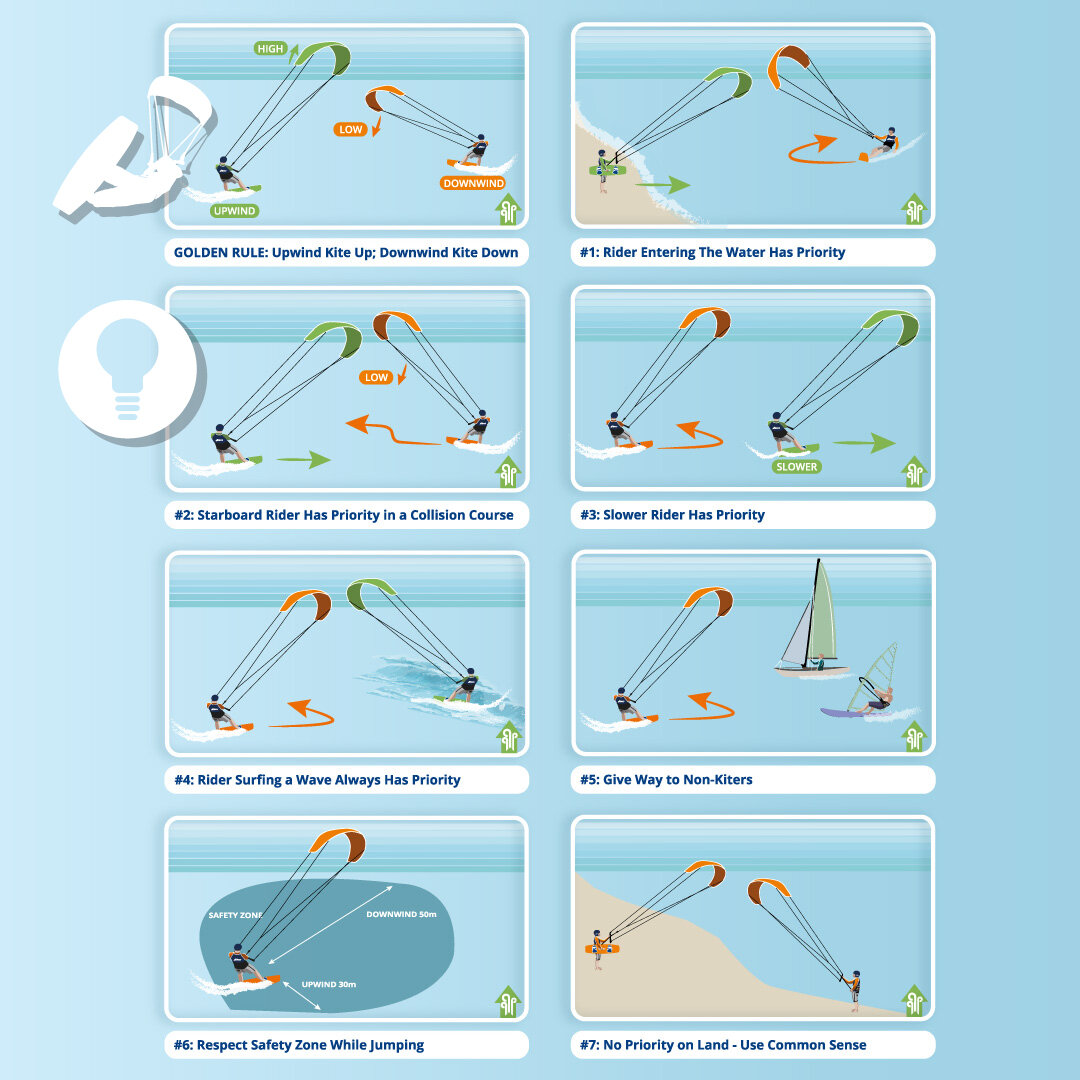
Take a moment to think and answer this… Do you believe it is important for car and motorcycle drivers to know the driving rules? If the answer is yes then would you believe it is also important for kiteboarders to know the rules of kiteboarding on and off the water? Unfortunately, many of us might agree with this logic though many individuals have never taken the time to learn and understand the rules.
In prior tips we have spoken about the 8 rules though it is important to share and remind all kite boarders of their existence.
Rule #1: The rider entering the water from the beach has right of way over the incoming rider.
Rule #2: Starboard rider (kite on the right-hand side) has priority over the oncoming rider and should keep his course, speed and heading to allow the other rider to avoid him.
Rule #3: When two riders are traveling in the same direction, the faster rider must give way to the slower rider in front.
Rule #4: The rider surfing a wave has priority over the one who is jumping or going in the opposite direction.
Rule #5: Right of way must be given to other ocean and beach users. Kiteboarder must travel downwind of them.
Rule #6: To jump, a kiteboarder must have a clear safety zone of 50m downwind and 30m upwind.
Rule #7: When two kiteboarder are on land at the same time, one kiter is preparing to enter in the water and the other one is ready to land, both proceed and keep clear from each other.
Golden Rule:
If you are passing upwind, keep your kite HIGH.
If you are passing downwind, keep your kite LOW.
These 8 rules will keep you and others safe during sessions. It is always important to be as sensible and educated as you can be in anything you are doing.

We all share a common passion for kitesurfing and our aim as a magazine is to inspire and help you achieve even more in our wonderful sport. Kiteworld delivers the most useful test reports and insightful content to help fuel your motivation and improve your kiting, whatever your level.
SUBSCRIBE TO KITEWORLD MAGAZINE AND YOU’LL GET:
- Each issue delivered every two months – in beautiful print editions, via sleek digital delivery, or both!
- A bang up-to-date Travel Guide to the world’s best kitesurfing destinations
- Plus: automatic entry into our regular equipment subscriber prize draws
Member deals are exclusive benefits of kiters with a premium membership, Instructors and IKO Centers. They help you save money on your favorite kite brand so you can keep investing in your favorite sport. Find all the current member deals in your profile, under the tab “Deals”. News deals are added every month so make sure to keep your membership up to date and login to your profile often.
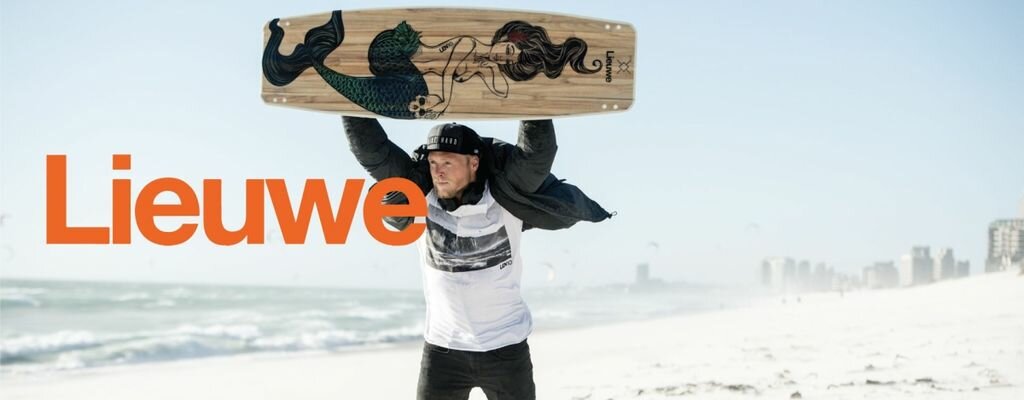
Lieuwe creates and designs handcrafted custom kiteboards in Holland. Each board is individually produced which means that none of the boards are the same. The wooden look we provide gives it a rough feeling. True craftsmanship with the newest technologies proudly shows us higher jumps, easier trick execution, and more comfortable riding.
Member deals are exclusive benefits of kiters with a premium membership, Instructors and IKO Centers. They help you save money on your favorite kite brand so you can keep investing in your favorite sport. Find all the current member deals in your profile, under the tab “Deals”. News deals are added every month so make sure to keep your membership up to date and login to your profile often.
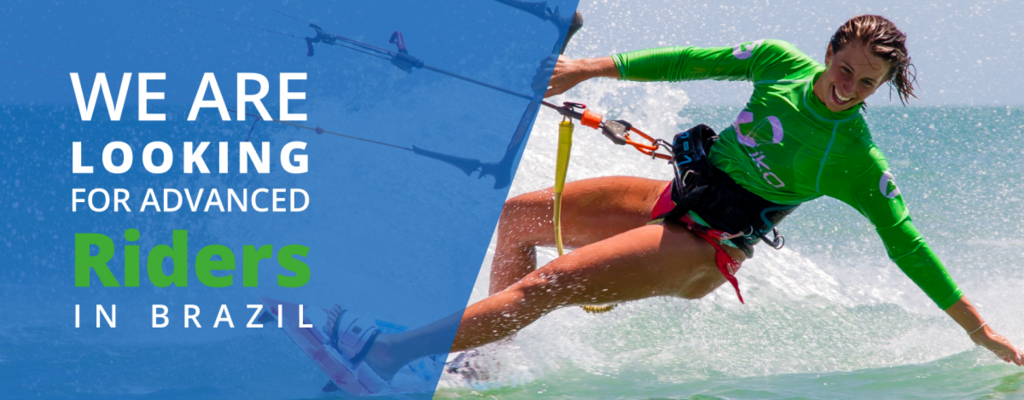
Hello Brazil!
We are recruiting for 4 enthusiastic kiteboarders (2 Females / 2 Males) to be part of a new IKO video series being filmed at Ilha-do-Guajiru in Itarema, Ceara, Brazil.
If you are in the area between December 4th 2018 till December 7th 2018 and meet the minimum riding level make sure to apply!
You will need to have a minimum riding level equivalent to kiteboarder Advanced - Level 4
We are filming:
- Instructional Videos
- Progression Videos
- Promotional Videos
To be part of the video series please submit general information about yourself with photos and videos to [email protected].
If you cannot attend, though know someone who would be a good candidate for the videos make sure to pass along the opportunity to them!
Thank you in advance,
Windy Regards,
IKO
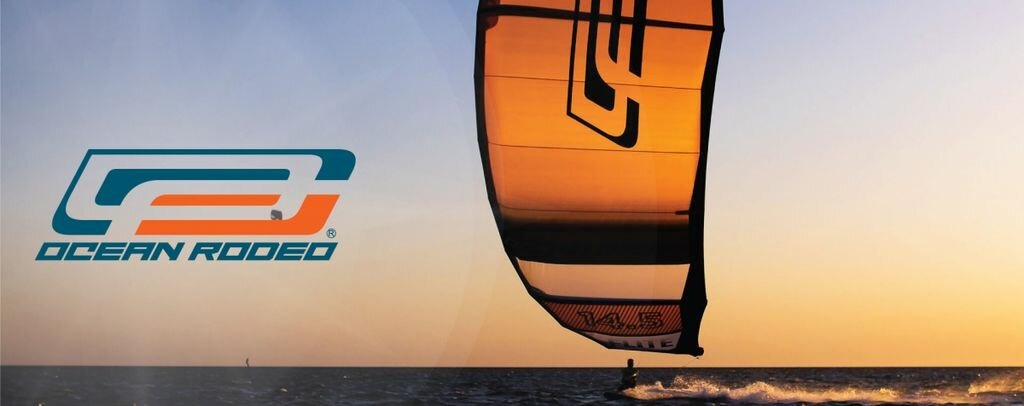
Ocean Rodeo has been a rider owned and operated kiteboarding gear company since 2001. At IKO, we are particularly happy with one of their product: the Go-joe. Designed to sit unobtrusively between your feet on the board, you won’t even notice it when riding. However, lose your board and the Go-Joe’s inflated body will flip your board over for you and catch the wind, sailing the board downwind so that it is never far from you after a crash or hard landing.
Member deals are exclusive benefits of kiters with a premium membership, Instructors and IKO Centers. They help you save money on your favorite kite brand so you can continue investing in your favorite sport. Find all the current member deals in your profile, under the tab Deals. News deals are added every month so make sure to keep your membership up to date and login to your profile.
*There is no IKO commission on bookings. This feature is available for all approved IKO Centers with either a Basic or Plus membership.
We are proud to announce a new feature which allows IKO Centers with Basic or Plus memberships to index kite course packages for Beginner (Kiteboarder Level 1/2/3), Supervision, Advanced (Level 4) as well as Evolution (Level 5).
This is a brand new and unique feature that IKO is offering along with IKO Centers for anybody who wants to learn how to kitesurf or progress further in kiteboarding.
How do you book an IKO recreational kite course?
-
Select a kite course package
All visitors will be able to search, compare, share, wish-list or book their recreational course packages (base on a number of hours and days) online. To send the booking, they must be a valid IKO kiter member. If they are not a valid IKO member, they will be required to sign up and select one of the three kiter memberships available to finalize their booking.
As a valid kiter member, all IKO’s learning resources will be available including Kiteboarder eBooks series Discovery/Intermediate/Independent, eCourses and learning videos. This means they can start learning online instantly and get prepared for the live course at your Center. -
Your Center receives the booking enquiry
All the client information and booking details are sent to your account. From there you will be in contact with the client directly to take care of payment procedure to finalize the booking.
Set up is less than an hour.
In order to display your kite course packages online, you need to:
-
Add prices including taxes.
-
Update additional option:
-
Home currency. Go to your school profile
-
Open season to not receive bookings during off season (optional). By default, your season is set all year around. Go to your school details
-
Spoken languages pre settings for all your recreational course packages. Go to your school profile
-
Course image. dimension 400 x 300 pixels min.
-
Your packages will become available online within your school profile and in the Training Calendar immediately. After a week of this announcement, the search bar will show up on the homepage. Make sure to add your course packages now so your offerings are online once the feature goes live!
Not an IKO Basic or Plus Center yet? Upgrade your Center before the 1st of April and instantly save 10% on the membership plan of your choice.
During the last months we have been working to ease accessibility and flow when registering your kite center, offering more front and backend services to existing and new schools as well upgraded the IKO Standards across the board. Read this email carefully and do not hesitate to contact us if you have any questions.

Easy Affiliation-
The school affiliation form has been translated into six popular languages; Portuguese, Spanish, Italian, German, French and English. The form itself has been simplified and is easier than ever to fill out. Compulsory boat requirement for Centers has been removed in some spots when schools can prove that the spot security is organized in a different way. We also released a free affiliation plan to help schools and independent Instructors begin the process with IKO. The primary requirement to register is having a valid insurance for the kiteboarding center.
There are many benefits you obtain once you affiliate your school which includes, though not limited to: The right to use the IKO logo and to advertise as an IKO Center which raises your school’s credibility and value proposition; additionally you can certify your students as they learn, and the perk of boosting your school in online presence due to IKO’s reach online. To top it all, this entry level affiliation is quick, easy and free!
Affiliate your center now
Improved SEO for your IKO Center
This past month we have done some backend changes that will help increase your school's online presence. Additions in country + location to your IKO Center’s URL will help your center be found online. We highly recommend fully completing your IKO profile and asking us for help if needed.
Don’t forget to upload new HD photos to your gallery to give a glimpse into your IKO Center to future students and Instructors!
Update your IKO Center information now
IKO Center Back-End Services Improve-
As an IKO Center, you can now certify students directly on your profile. When hosting Pro Courses, individuals can reserve their spot directly on the website and manage the rest of their booking and payment directly with your Center. Make sure when planning a pro course to check your school profile to see the message from potential candidates.
We are also now working on implementing a new feedback system for IKO Centers to Instructor. We would like to know what rating criteria as a Center would you like to have for your Instructors?
Read how to follow up your bookings
IKO Quality Control Efforts Continue Internationally
Over the years we have encountered and handled many cases of IKO imposters; they have harmed the image of quality across all IKO Centers and Instructors. As a community, we found this unacceptable and have decided to work together to ensure the safe growth and development of the sport. We are now taking new measures coming into effect in January to improve and control the high-quality standard internationally.
Beginning 1st of January 2018, any IKO Instructors that are teaching independently and promoting themselves as a business must register themselves as a business to continue using the IKO name and logos. Any Instructor who is independent and not registered as business risks being sanctioned and issues with the DMCA.
This quality standard update will be an effort to maintain the quality internationally for both IKO Centers and Independent IKO Instructors. Whether you are a Center or Independent you will need valid insurance, up to date IKO status and access to either a boat or safety unit if it applies to your spot.
We have made a free affiliation for both centers and independent Instructors which can be found here. We highly recommend you fill out your affiliation form sooner rather than later to avoid issues.
If you have any questions, comments or recommendations please email us back here.
Windy Regards,
IKO
The New Training Path Helps You at Any LevelDid you know that IKO helps every kiter from the beginner level to the more advanced one? Our most recent course, the Evolution Clinic enables advanced kiters to improve their skills and adquiere new theoretical knowledge. The Evolution level is only taught by IKO Coach. Check the details of all courses on our website! |
 |
Recover Your Board Faster and Easier Without the Board LeashThe board leash has been totally banned from IKO since 2011. Some non-certified Instructors still use it as is “makes it easier for the student and we never lose the board”. IKO wants to remind that it is very dangerous and it is best to lose a board than to have an unfortunate accident. Beginners can now use a buoy fixed on the board’s handle. This helps to spot the board that is pushed downwind for a faster and easier recovery even by an inexperienced rider.
|
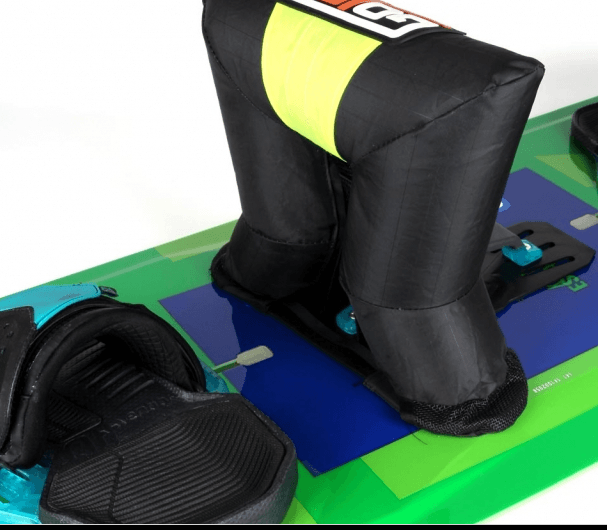 |
Avoid Being Hit by Your Own BoardThe new strapless wave riders tendency brings the board leash back to “avoid the board being pushed away by the wave”.Even if you do not jump, the risk of being hit by your own board isf high. Some may think, “but why surfers use one?” A surfer needs to have a board leash as his board is his only surviving help, his buoy. Kiteboarders should use their kite to help themselves. Have a look at the self-rescue and packdown procedure if you are not familiar with both. Any IKO Instructor will be happy to teach to you.
|
 |
Do You Master the Self-landing?Did you know that self-landing is learned and mastered during the IKO Discovery Course? It is always better to land your kite to someone. Avoid landing on your own. However, in some occasion you might finish your session alone and would need to do a self-landing. It can be dangerous to do it on your own with no special training. Take time to review it in an IKO affiliated Center.
|
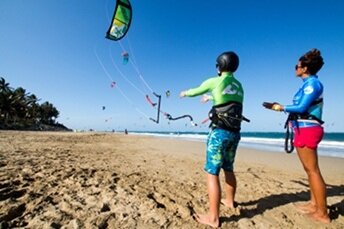 |
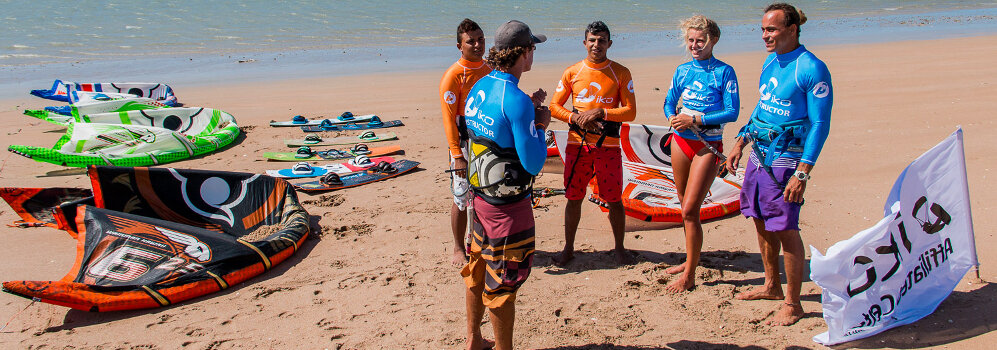
School Requirements Revised
-
6 months extension for the Instructor L1 to become L2.
-
Basic general liability insurance certificate including or not Kitesurfing activities according to the country your school is located in.
New great advantages for each School membership
All pro trainings are run exclusively in your school including the new Assistant Instructor Training Course Plus (AITC-Plus).
IT’S A GIRL THING. IKO DEBUTS T’S AND TANKS FOR WOMEN
The IKO is pleased to introduce you to our new woman’s signature clothing line starting with our T’s and Tanks collection. This new IKO girl gear features a burst of colorful sports tops suited for the active lifestyle of all kiteboarder women and is branded with the elite IKO logo.
Our t-shirts are American Apparel with a design called, “IKO Girl.” Our tank tops are also American Apparel. Our t’s and tanks come in four brilliant colors: coral; turquoise; sunshine and mint.
Girls, get your IKO kiteboarder mojo on with IKO’s new T’s and Tanks collection especially made to fit you.

Teaching “Self Rescue” can also be fun and engaging. It can be taught when the wind dies down so time is not wasted. It can also be taught after a long body drag session when the student is tiring out. Bring the student back to beach and teach it!
Students pay for IKO kiteboard lessons to receive the safest training available. When “Self Rescue” is taught before the water-start, students will then be already trained for the Assistant Instructor Training Course (AITC) on how to properly self-rescue. Most of all, they will be safer during their personal practice.
Watch IKO’s “Self Rescue” Video Online
Happy Teaching!
The IKO Team
-
Helmet.
-
Kite harness with a handle in the back.
-
Buoyancy aid for water lessons.
-
Stainless steel hook knife specifically for water. It must be in all harnesses and/or buoyancy aids.
-
For kiteboarding boat license for is no longer required.
-
For snowkiting, a letter of recommendation verifying teaching experience in a skiing sport is no longer required.
-
The riding level requirement for ITC Candidates has been increased. In addition to previous requirement it must be demonstrated by: jumping and grabbing; performing toe side riding and board recovery in deep water; and in rider recovery body dragging.
-
The minimum required teaching hours to be certified are now 9 hours during an ITC.
-
New criteria have been established for the final evaluation of Instructors.
The Standards document is a reference that all IKO Pro Members should follow.
Changes to the chart of sanctions
-
The re-evaluation of pro members does not exist anymore, but if suspended, an Assistant must redo an AITC and Instructors must do an IEC.
-
Pro members will be able to earn back five (5) quality points every two years provided they have not committed any violation. These points will be given back to members upon a written request.
-
New offense had been added “Teaches beginner with powerful kite (student can fall)” and will be sanctioned.
How Do I Get it?
1. ENTER URL:
-
For standards: http://ikointl.com/content/standards
-
For Chart of Sanction: http://ikointl.com/content/chart-sanctions
Happy Reading!
The IKO Team
We have the pleasure to announce you some new nominations in the IKO team.
2 of our professional members had just achieved successfully their trainings and recently acceded to new positions. We are proud to introduce you:
Stephan Zatt, from Netherlands living in Amsterdam, who had just become one of our Training Master. Stephan has been working as an IKO Examiner since 2007 and is the owner of the Center KiteSafe in Amsterdam.
Jeffro Rothenberg, from Seattle in USA, is now part of our Examiner team. Jeffro has been teaching kitesurfing with IKO since 2006 and is the owner of the Center Urban Surf Kiteboarding in Seattle.
Congratulations to them and welcome in their new functions.
If you as well are interested in getting ahead in the kiteboarding training please check our website www.ikointl.com and do not hesitate to apply for the training you are qualified to.
IKO Team
| Contact IKO | |
 |
Call us |
| Our office team is available from 12:00 p.m to 5:00 p.m and 6:00 p.m to 8:30 p.m UTC/GMT. +1(809) 5719530 |
|
 |
Email us |
| Not found your answer from the FAQs? We experience high volume requests, however we will do our best to answer as soon as possible. |
|
| Contact IKO | |
 |
Call us |
| Our office team is available from 12:00 p.m to 5:00 p.m and 6:00 p.m to 8:30 p.m UTC/GMT. +1(809) 5719530 |
|
 |
Email us |
| Not found your answer from the FAQs? We experience high volume requests, however we will do our best to answer as soon as possible. |
|
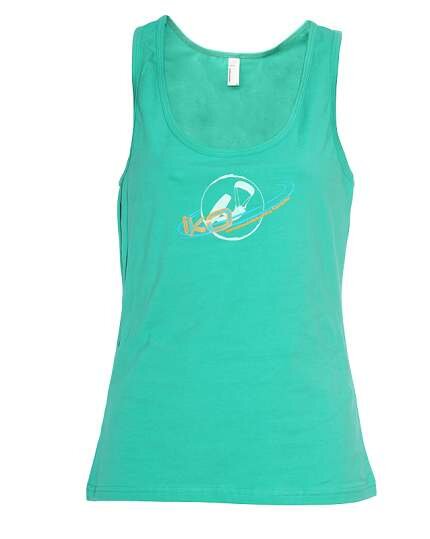
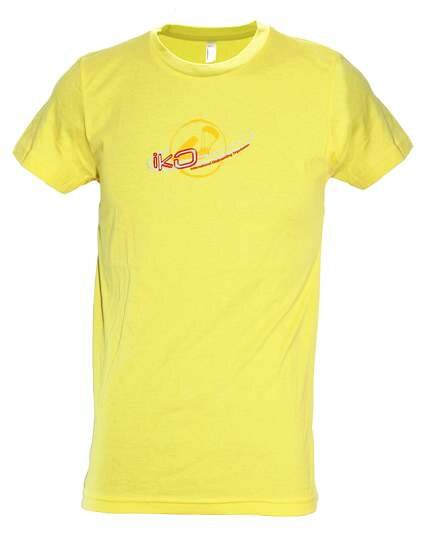

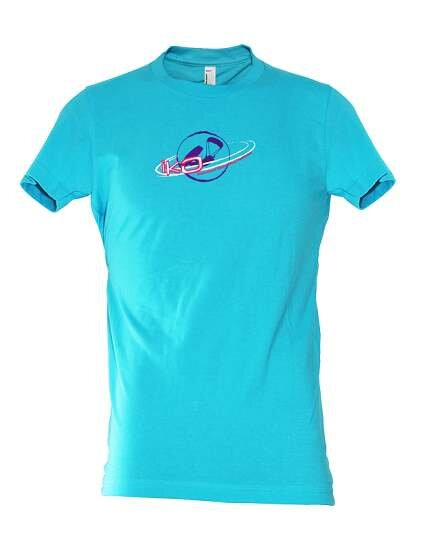


.png)

